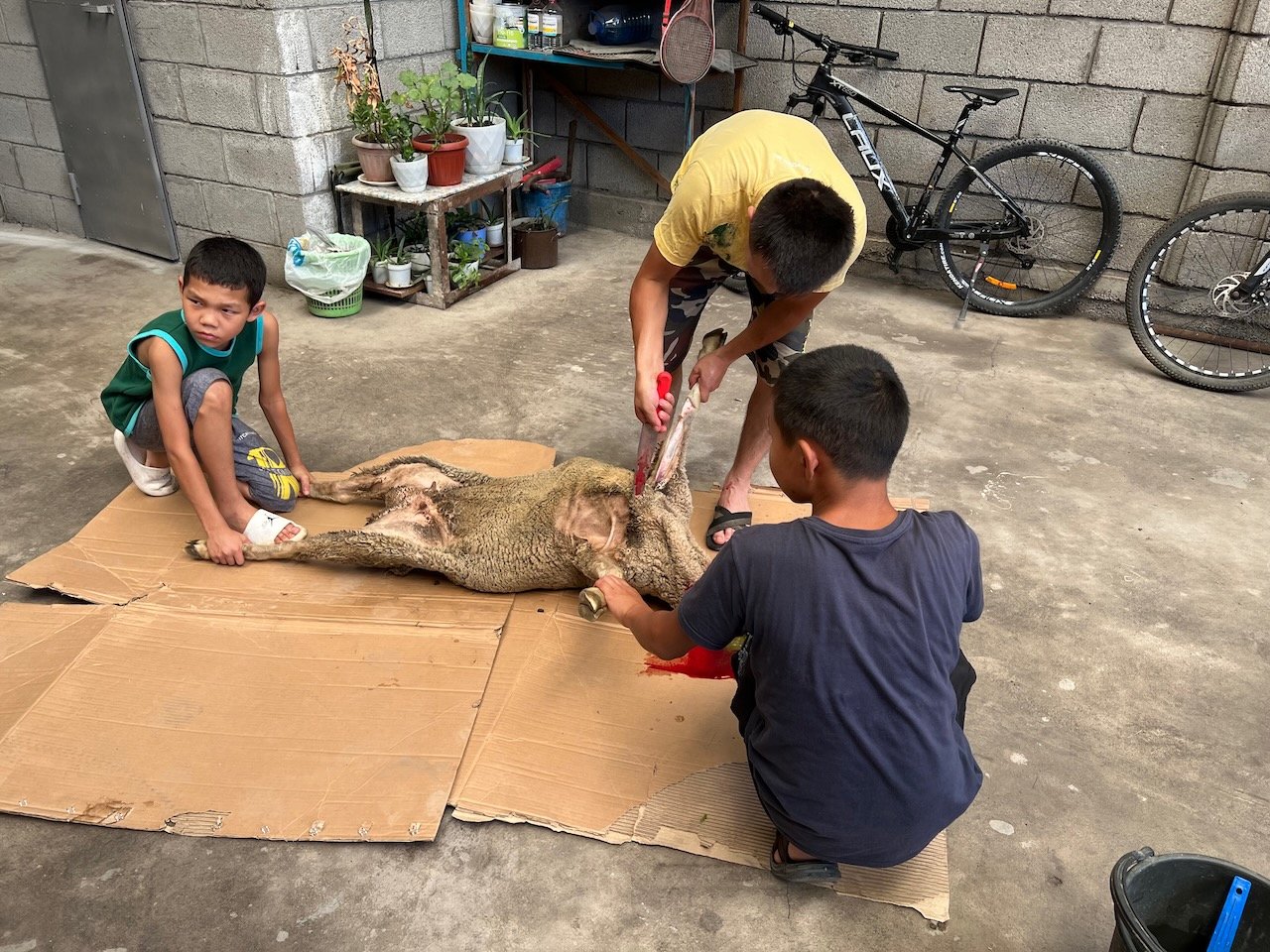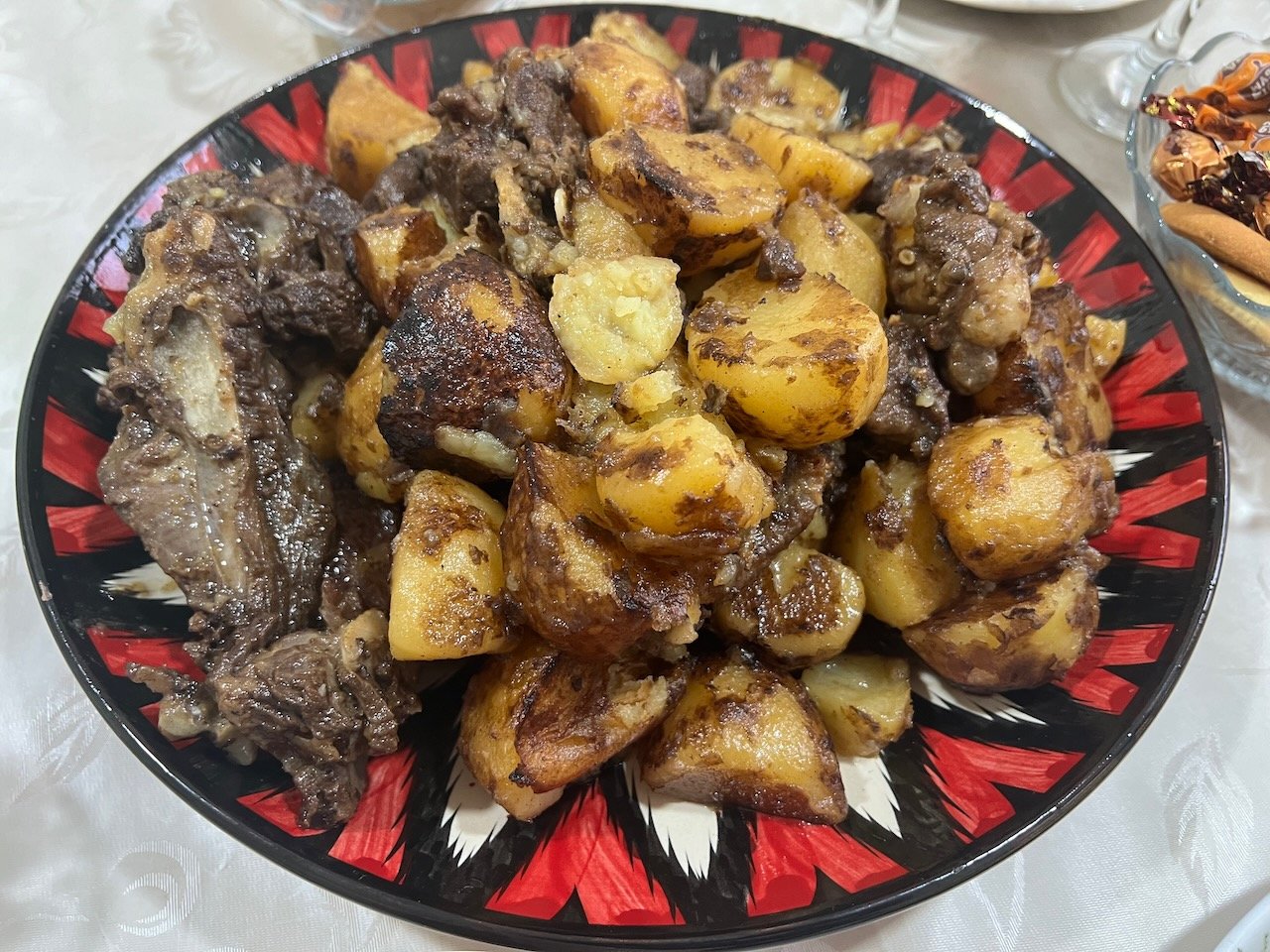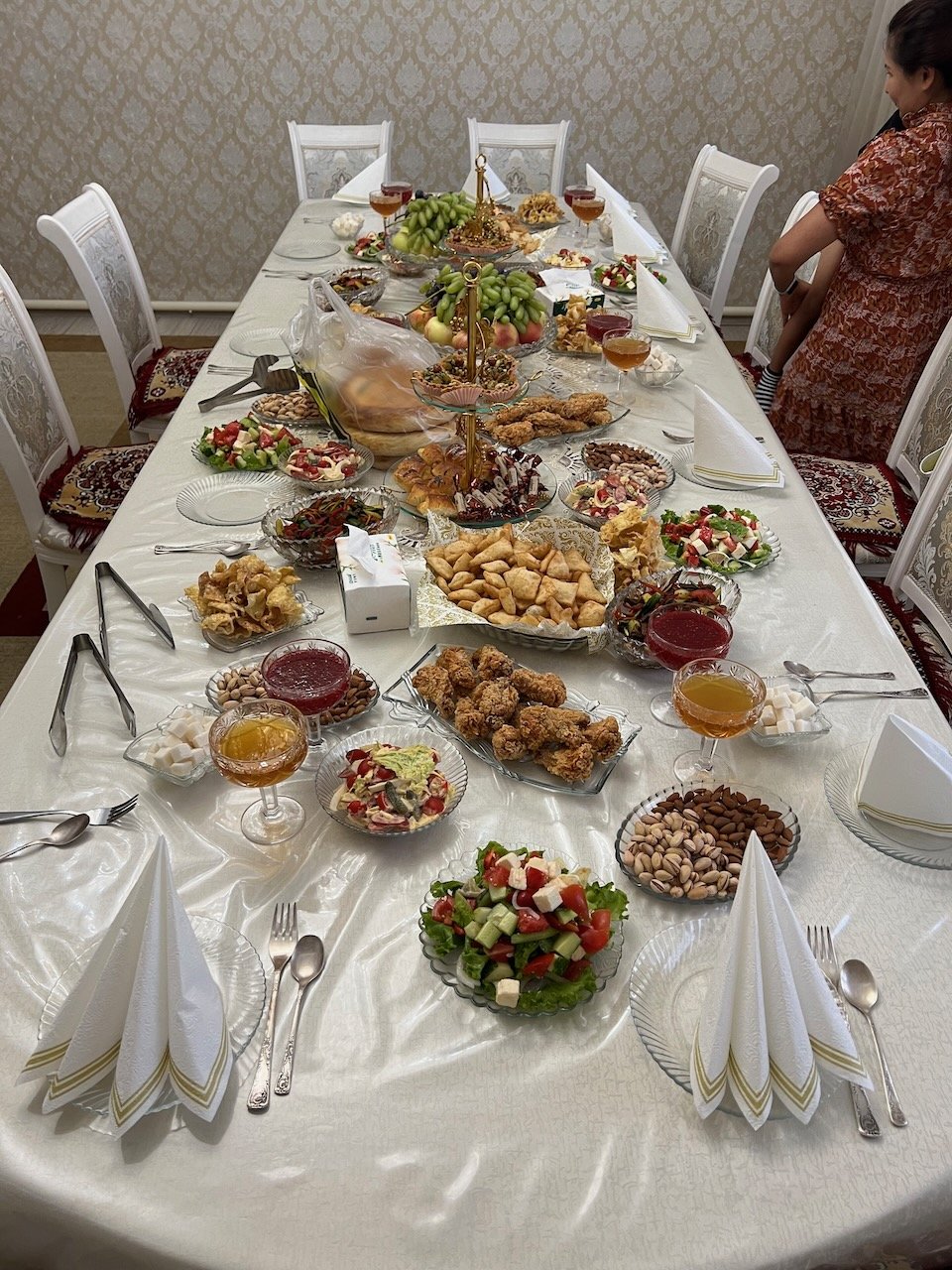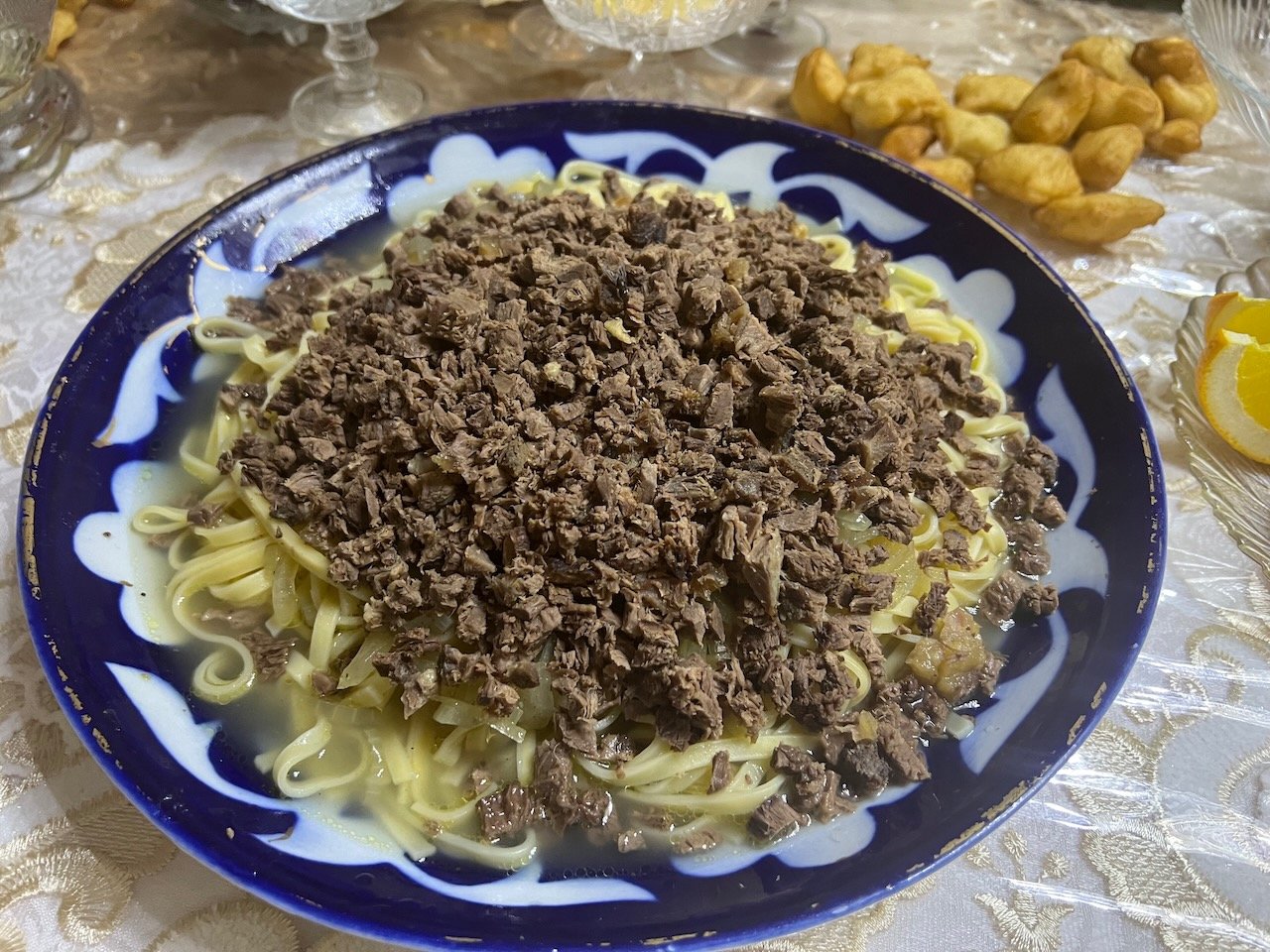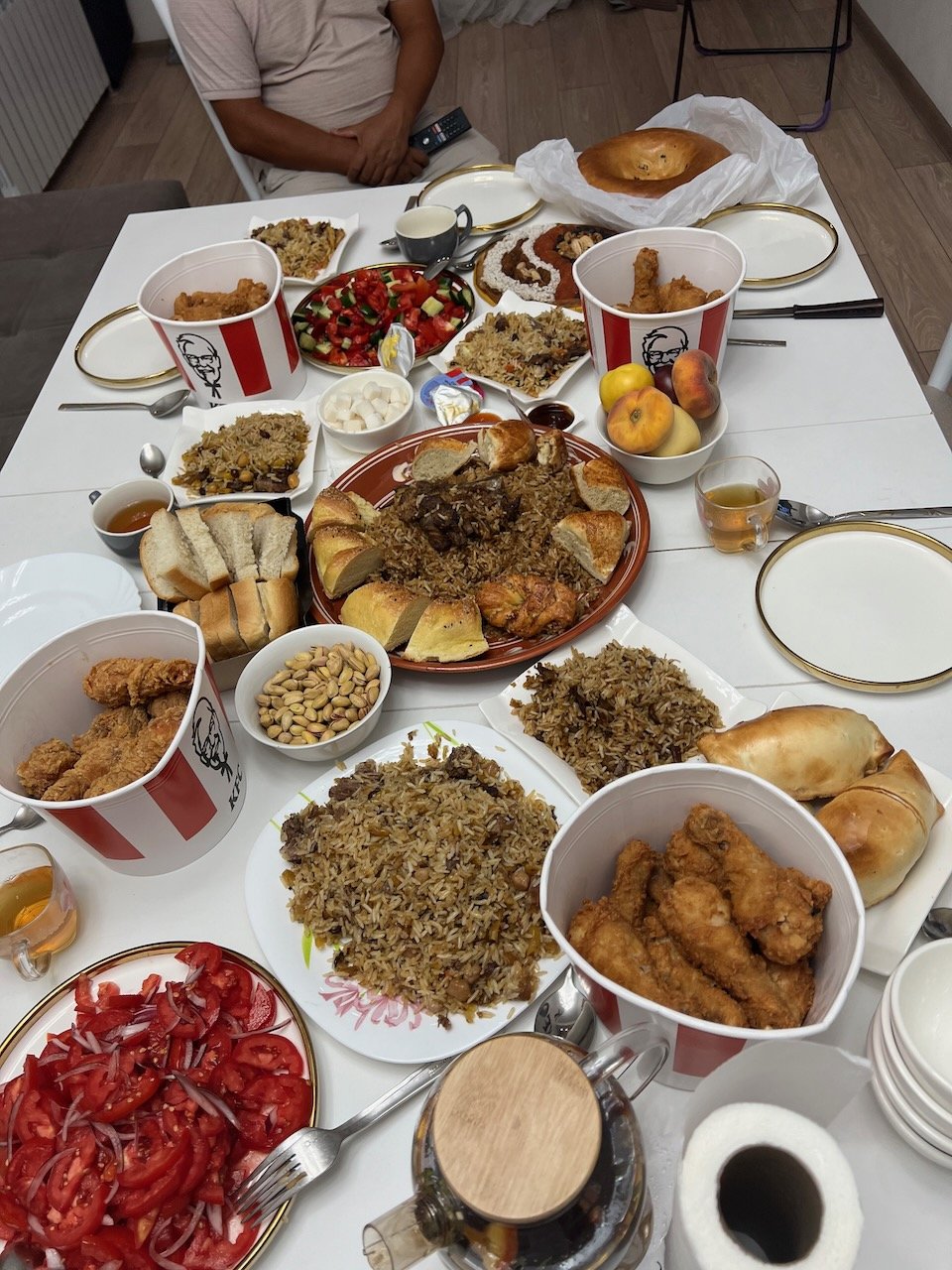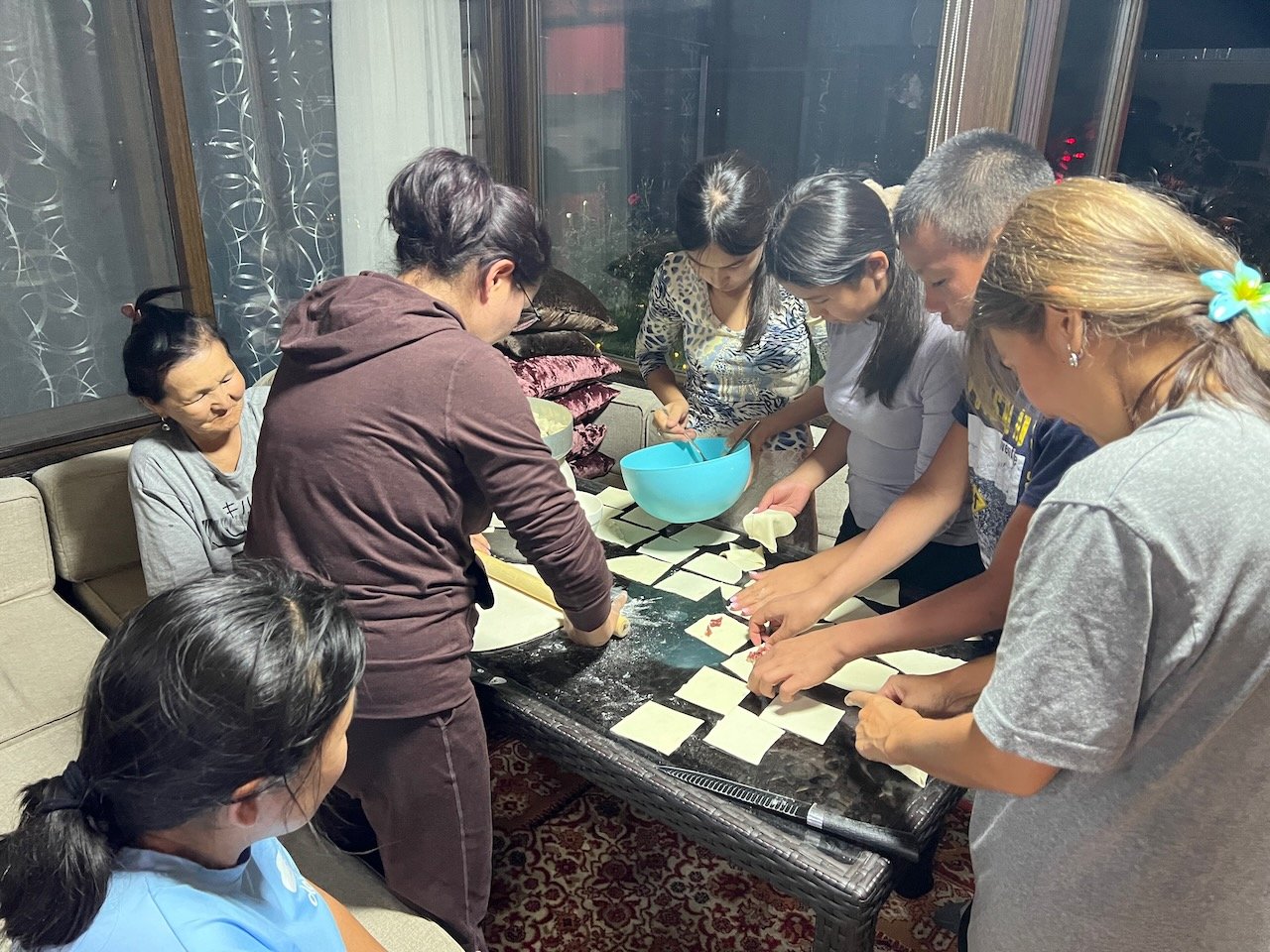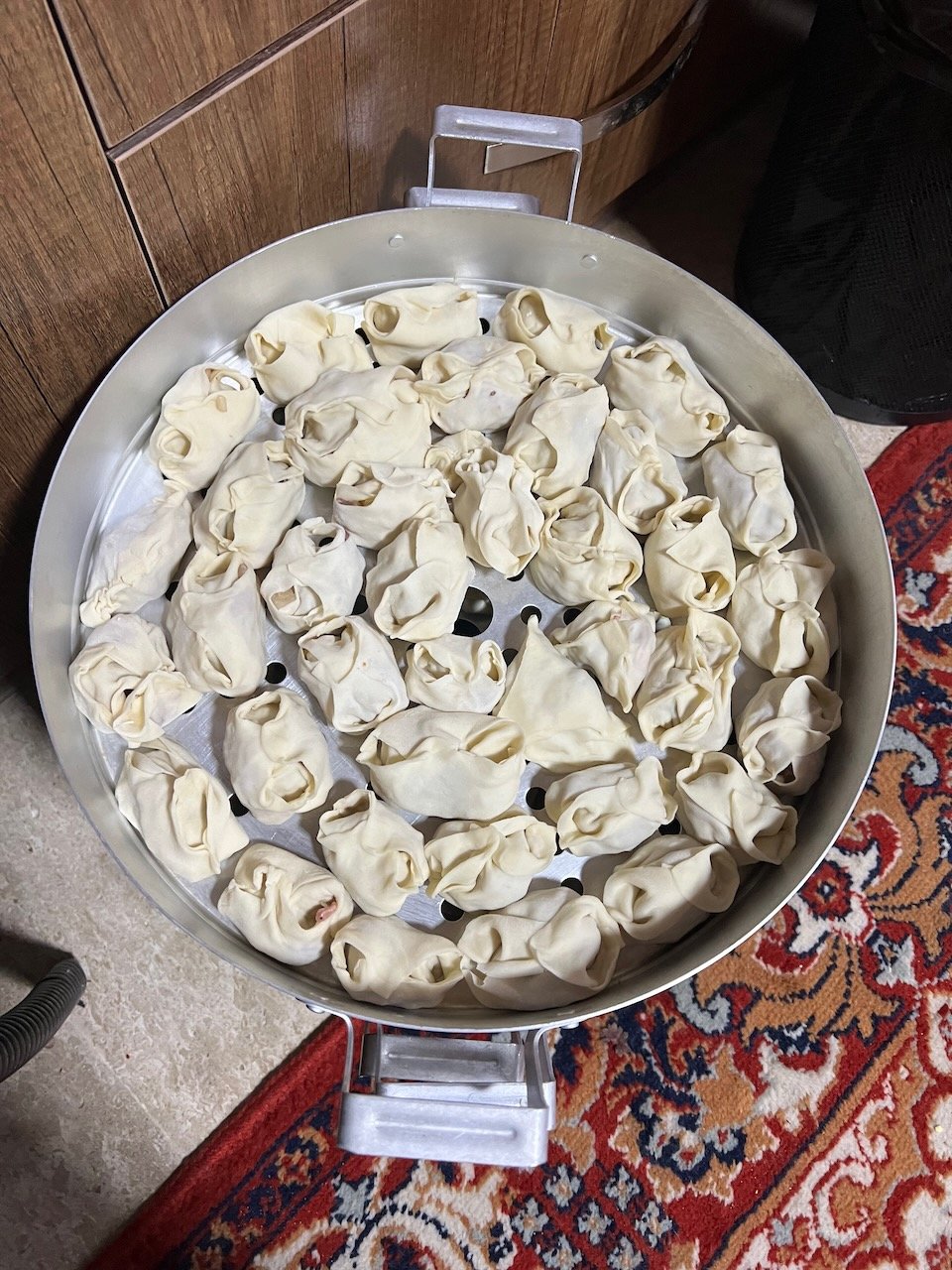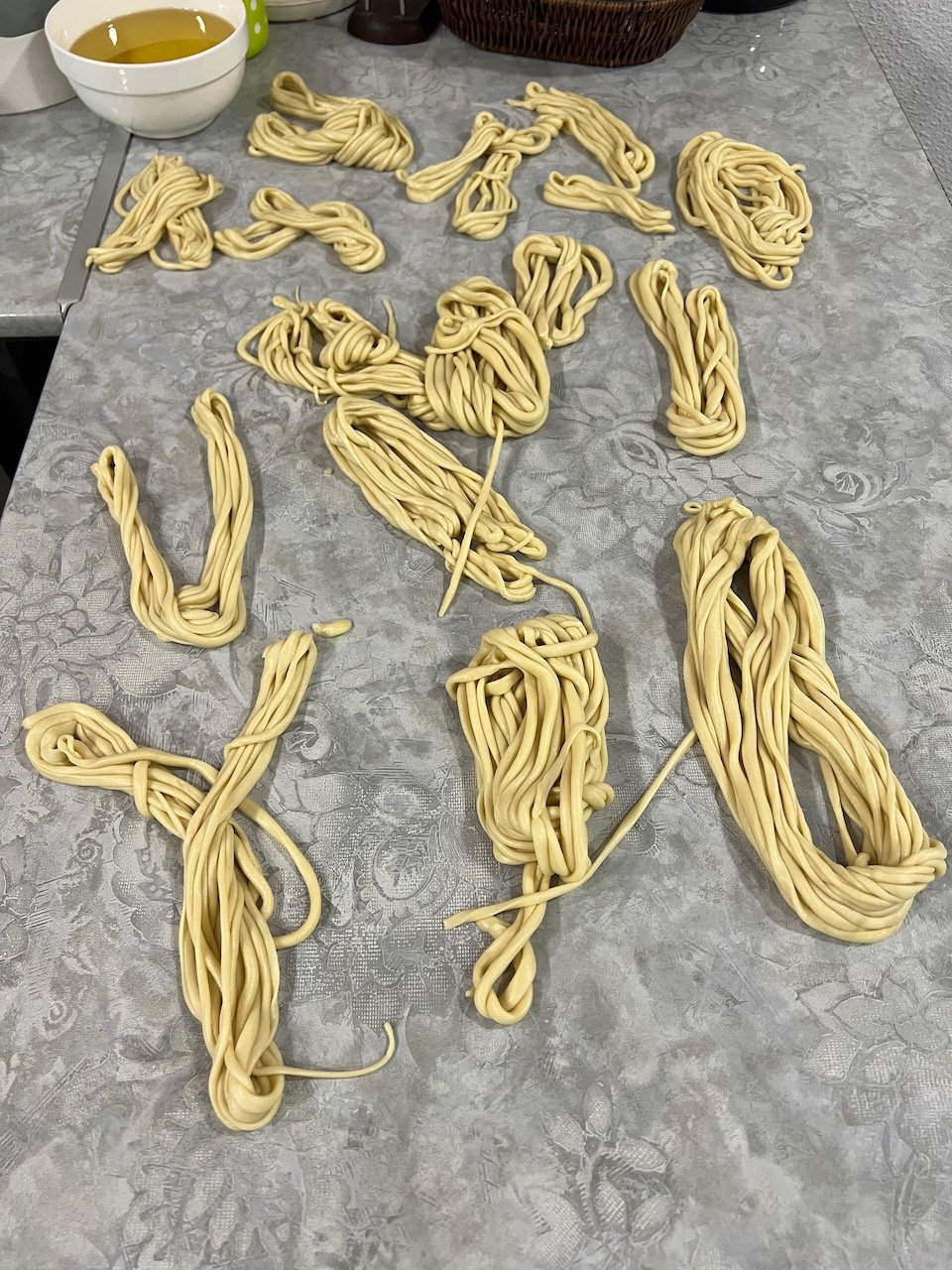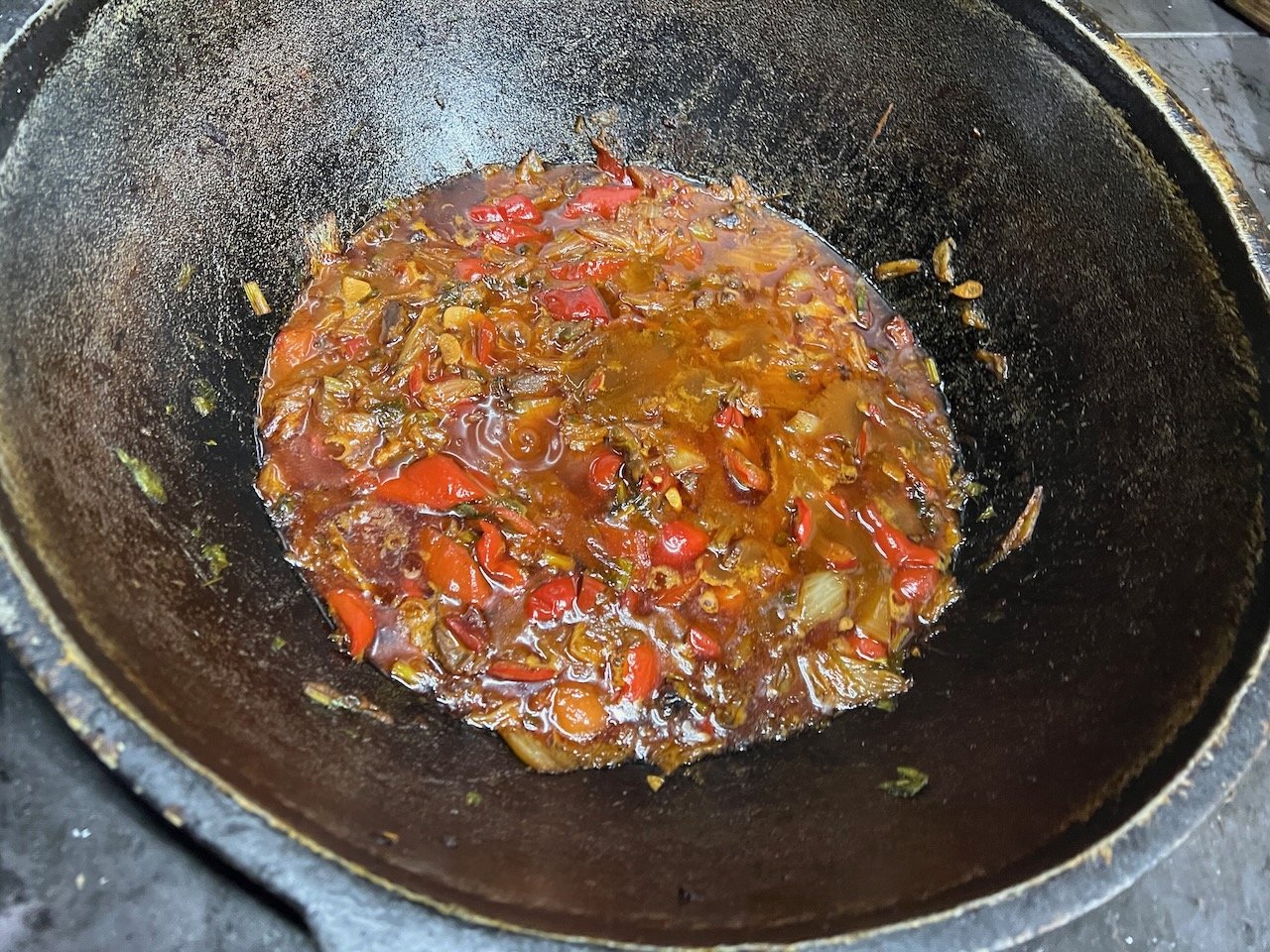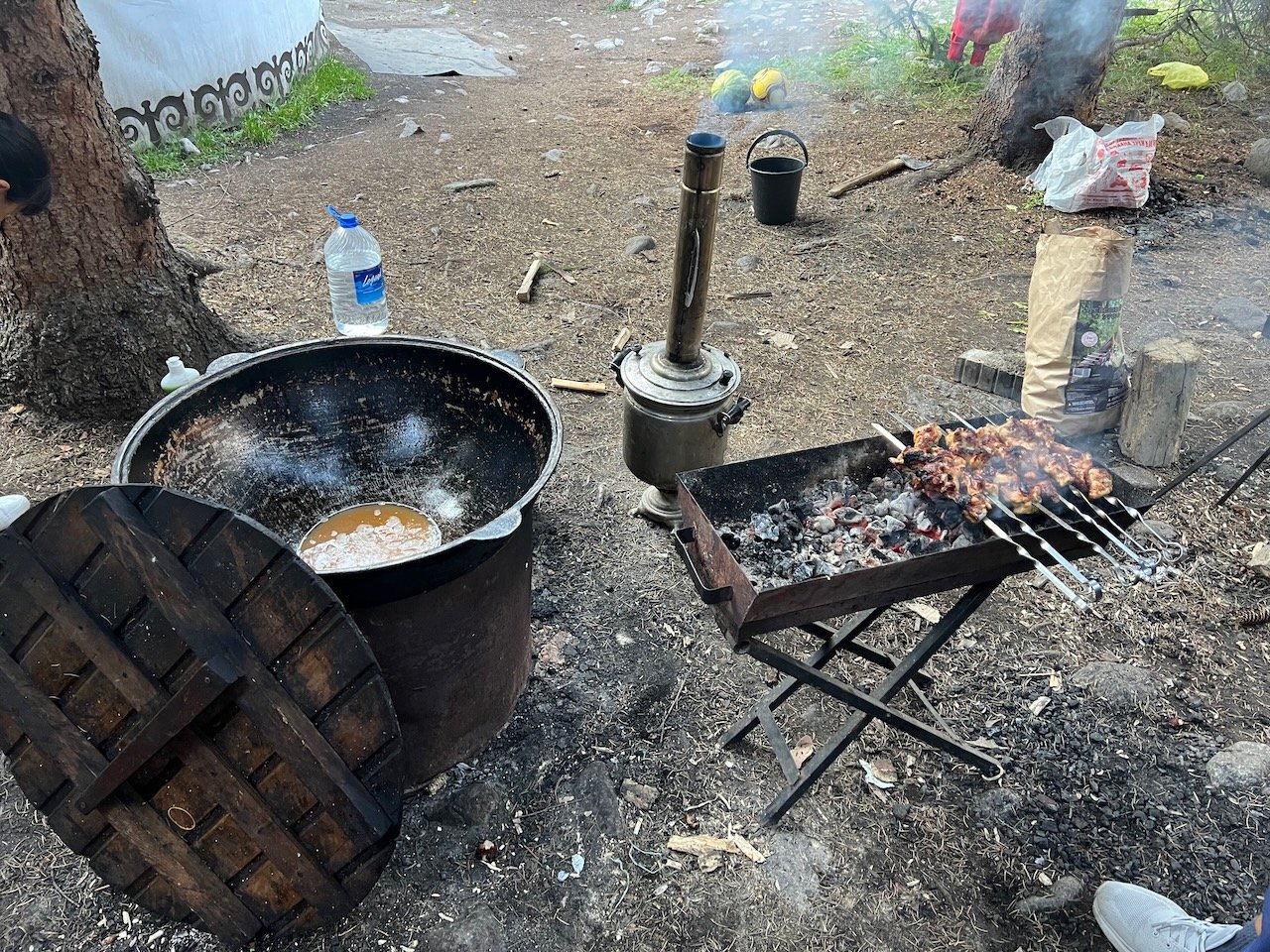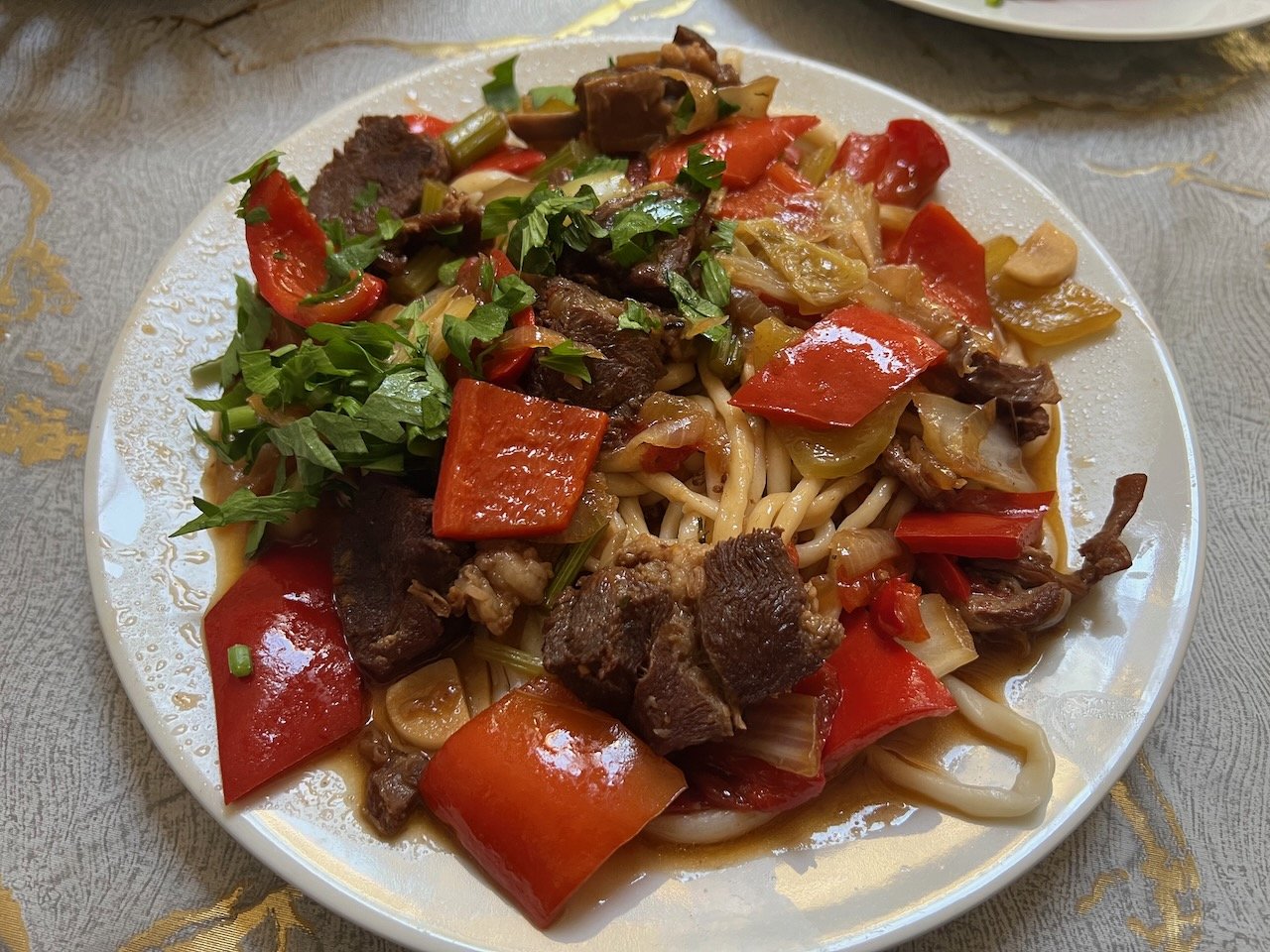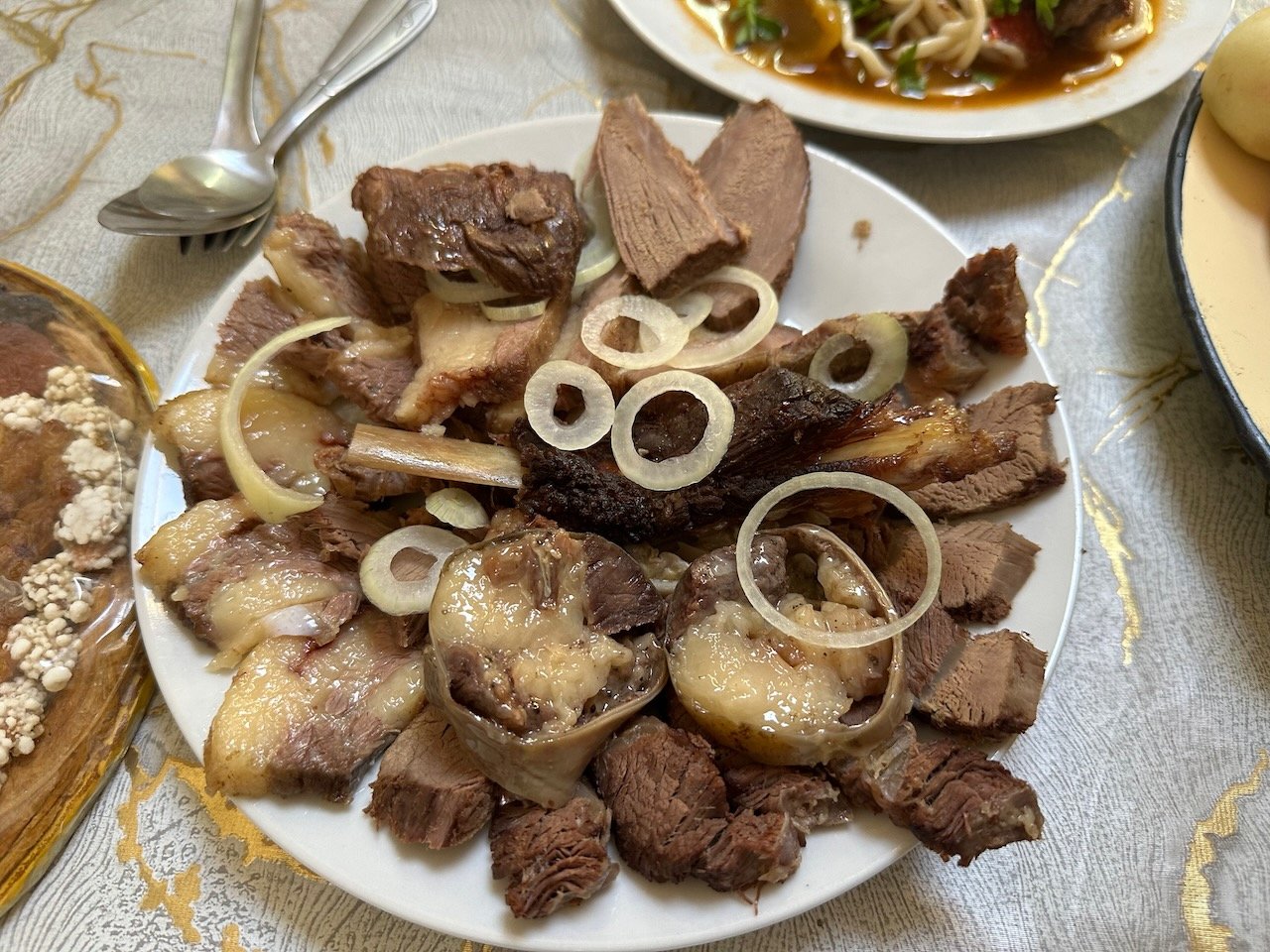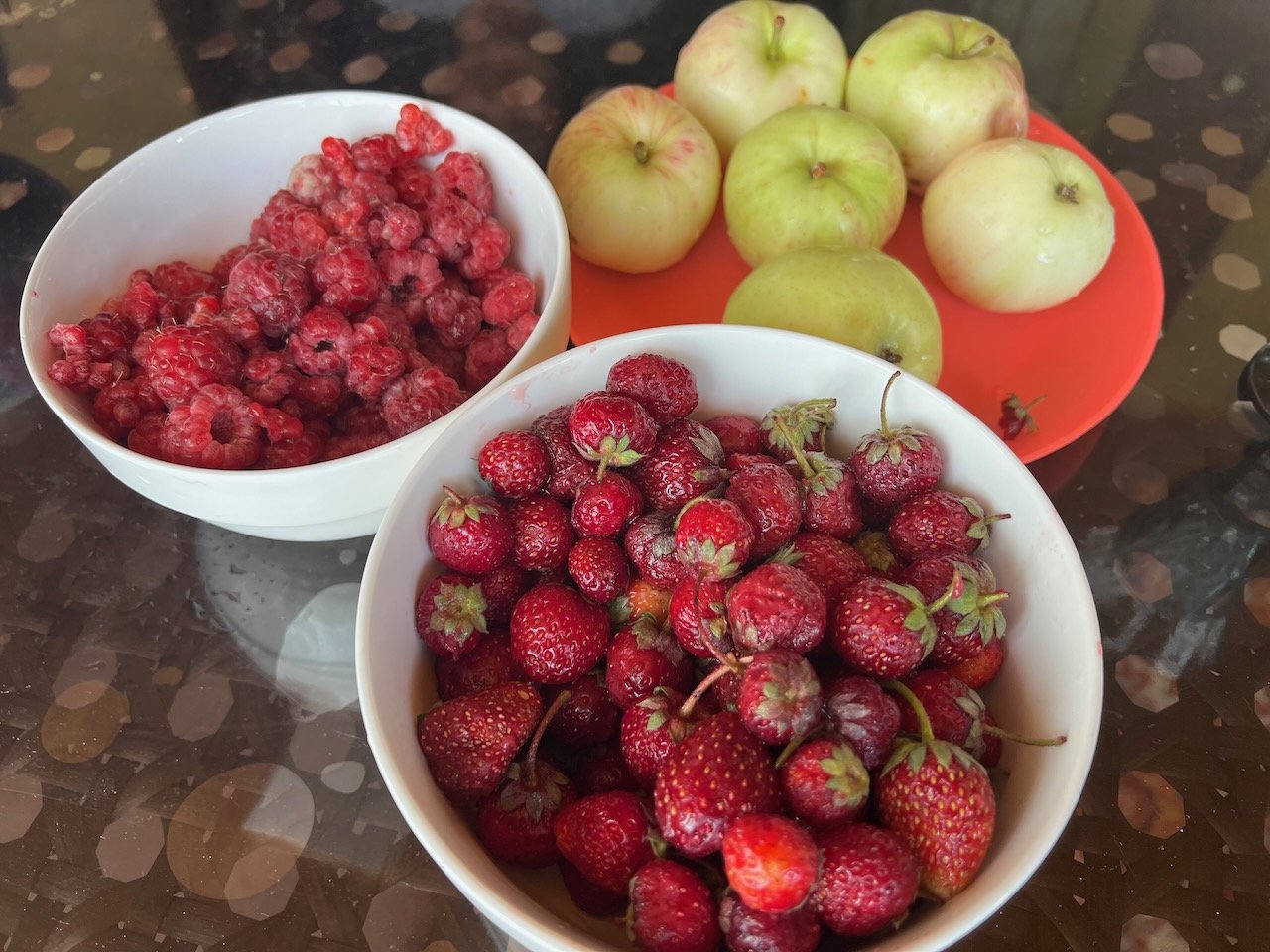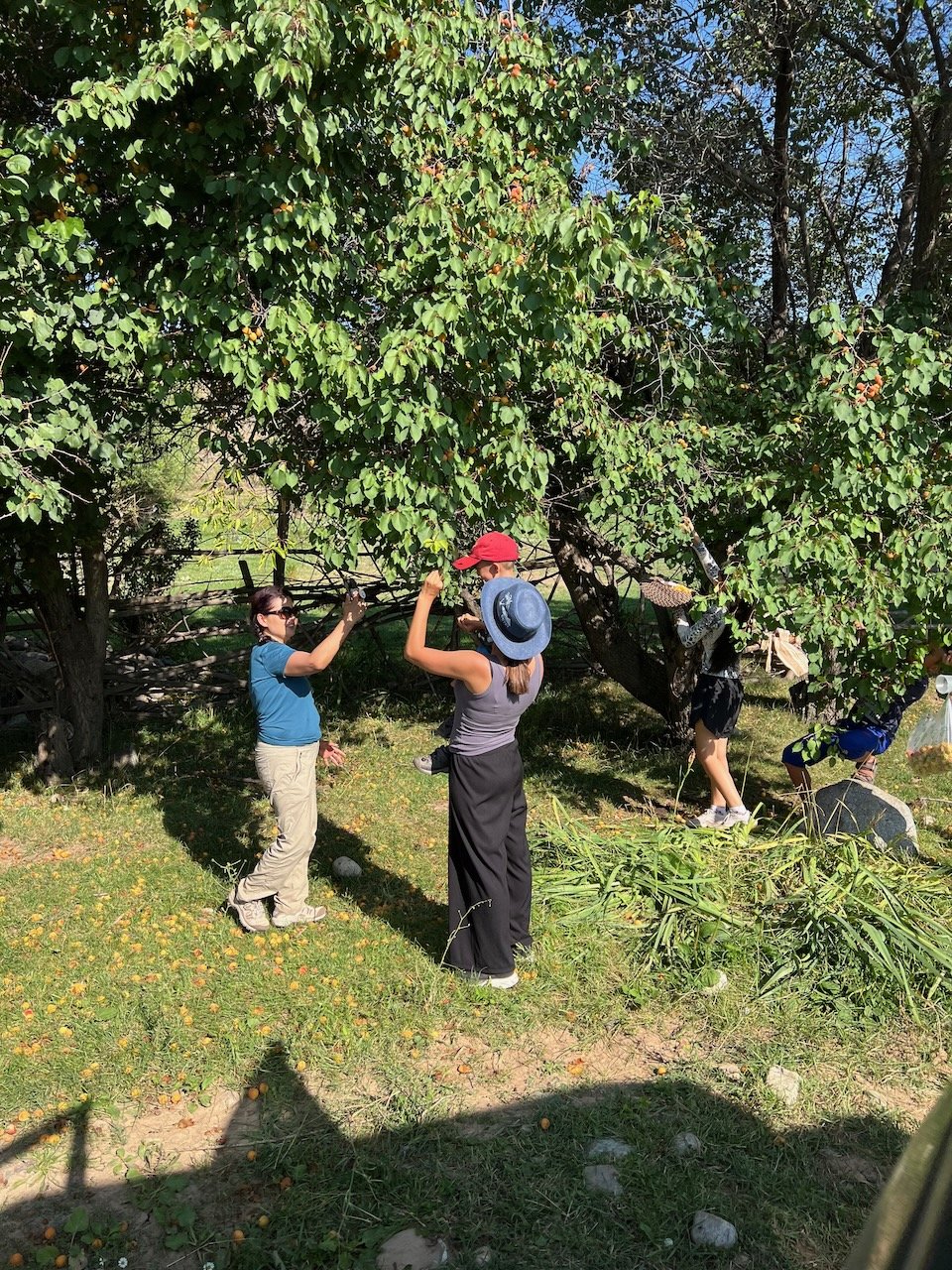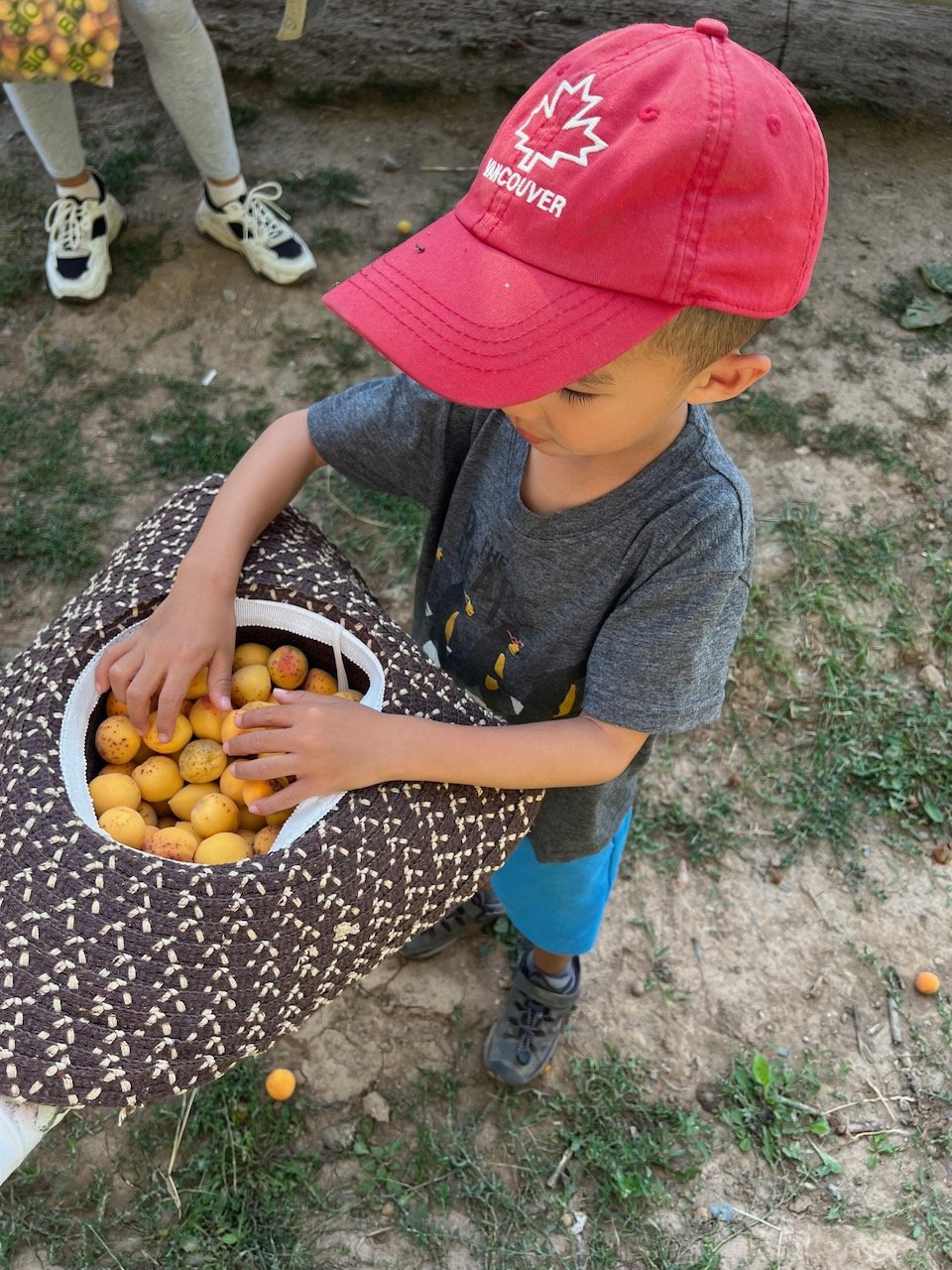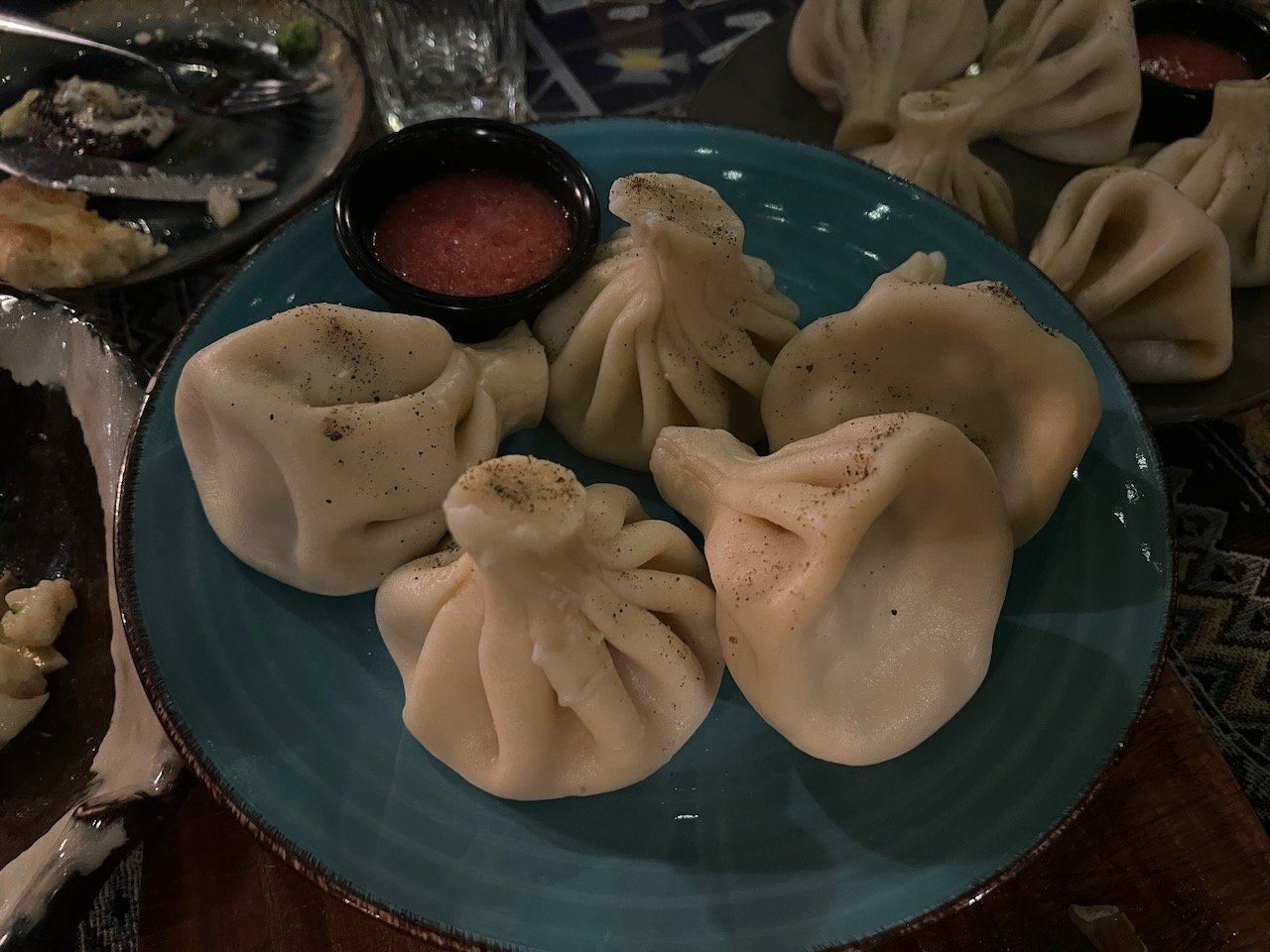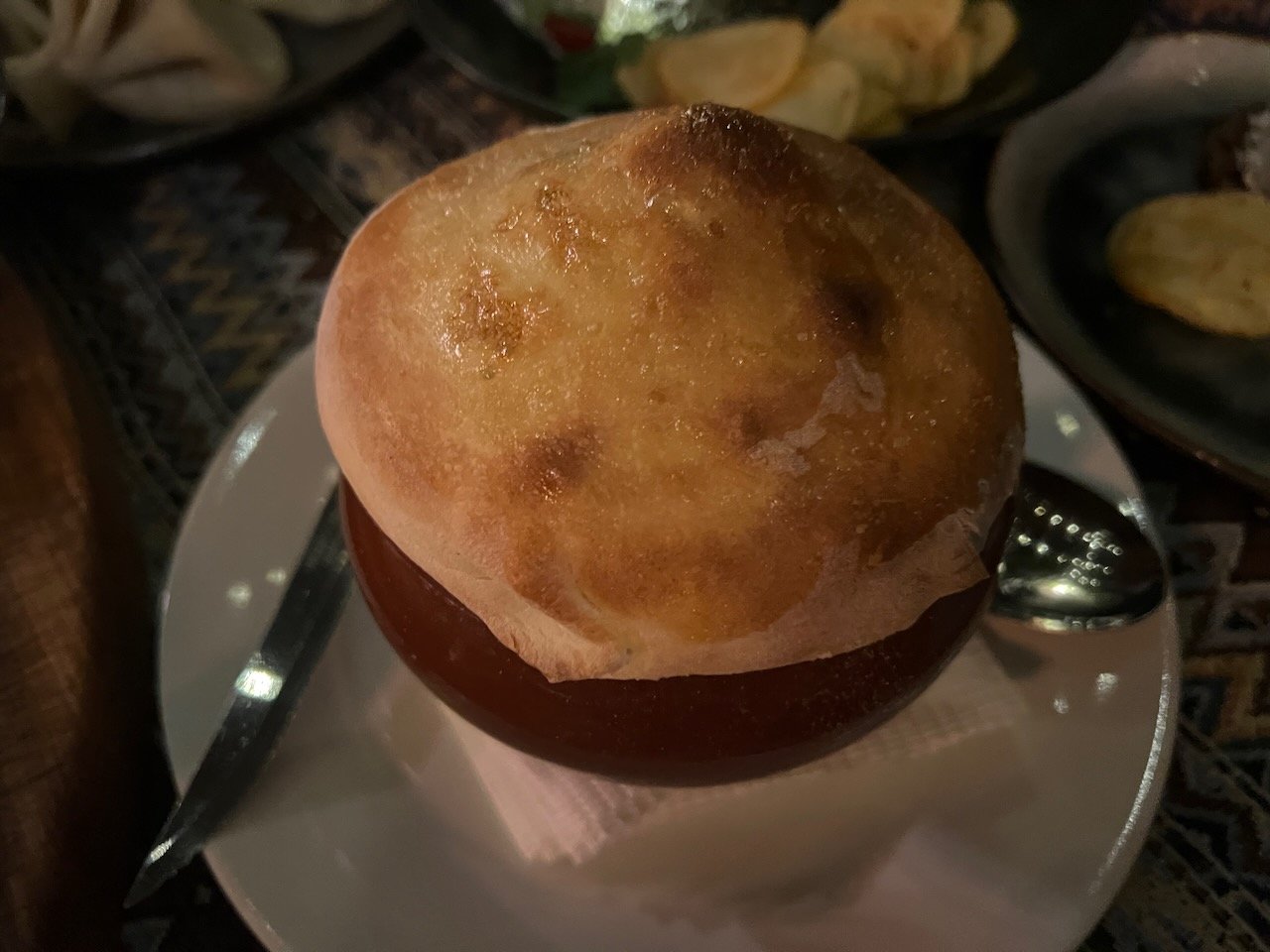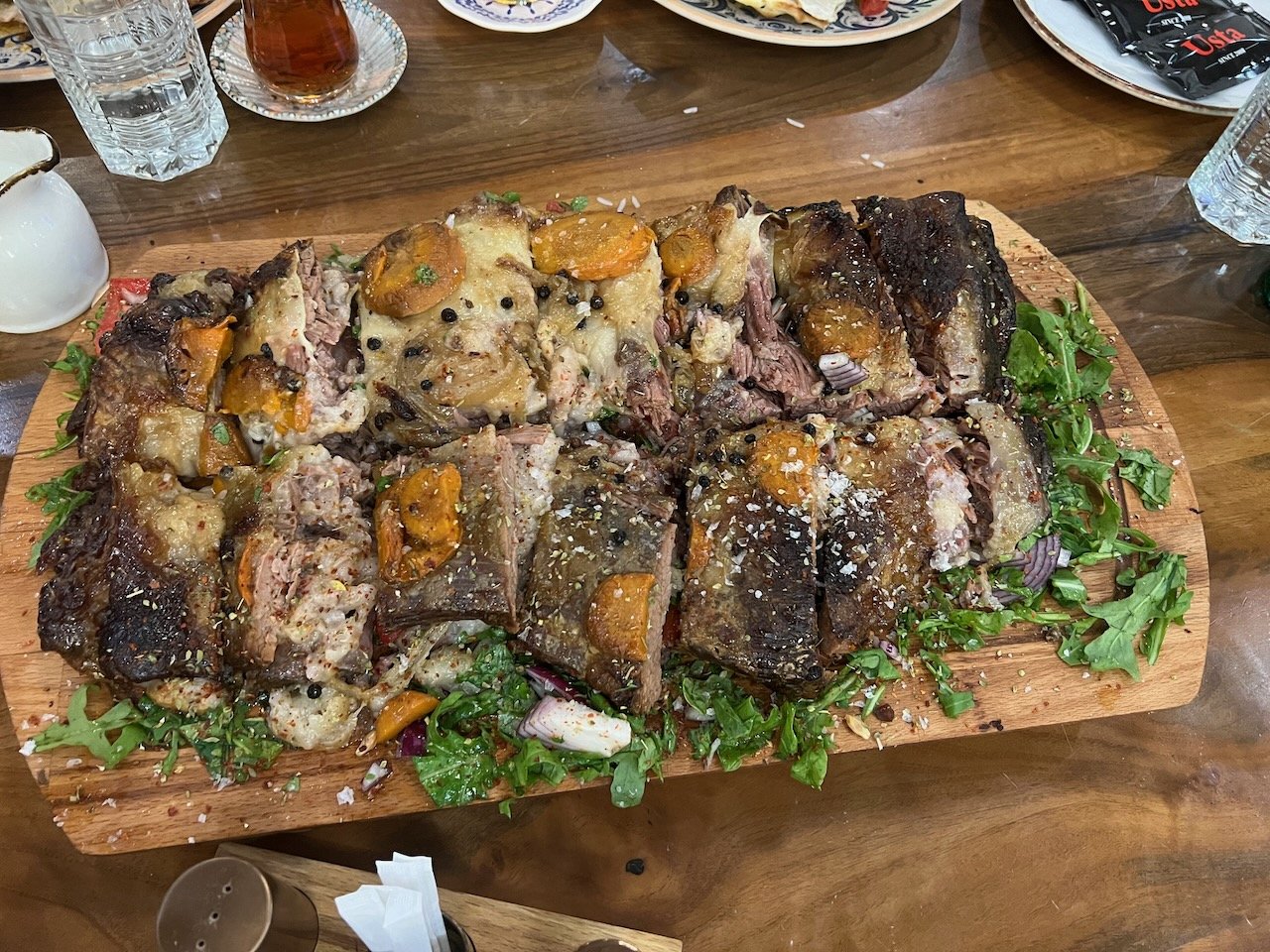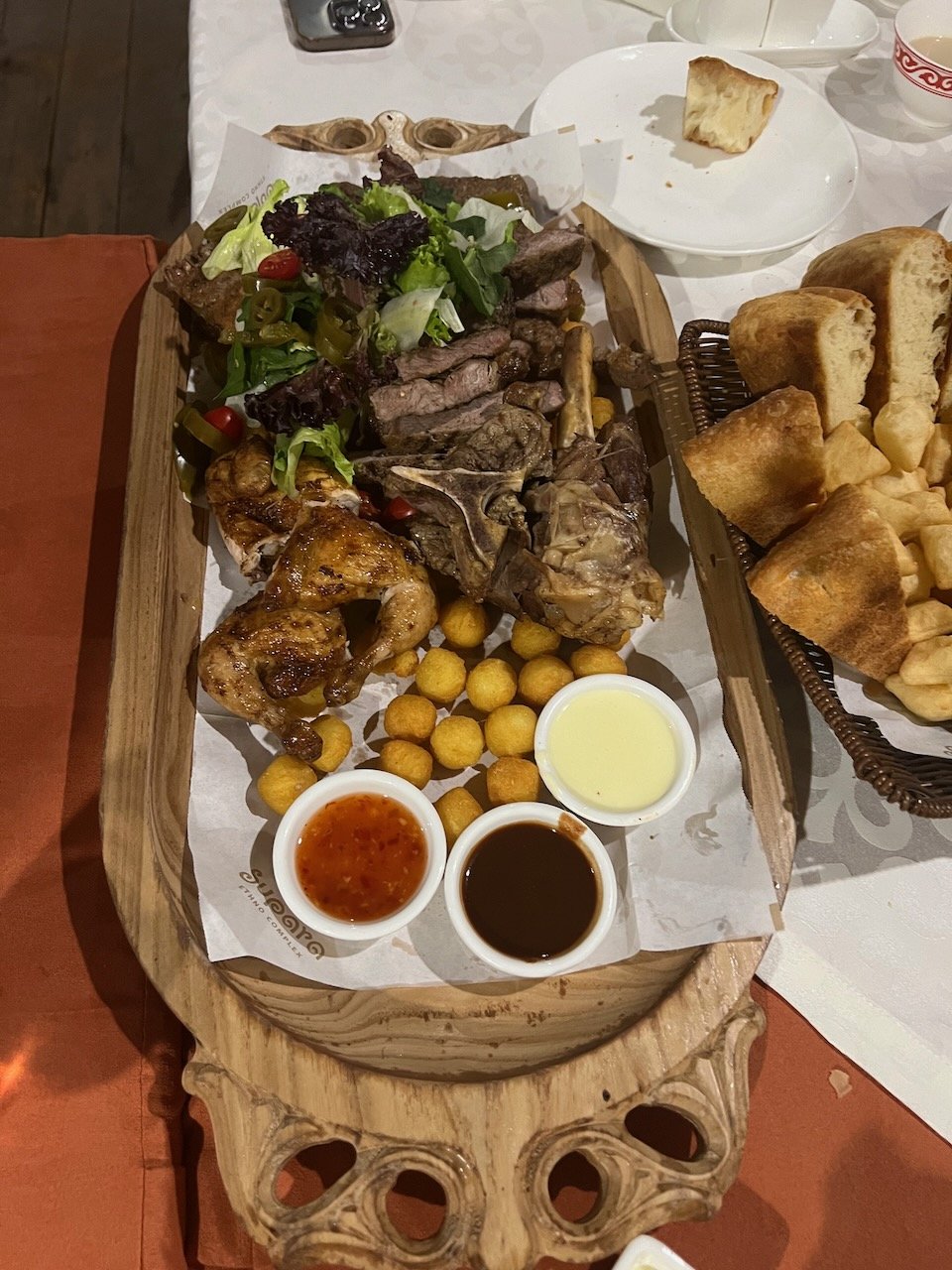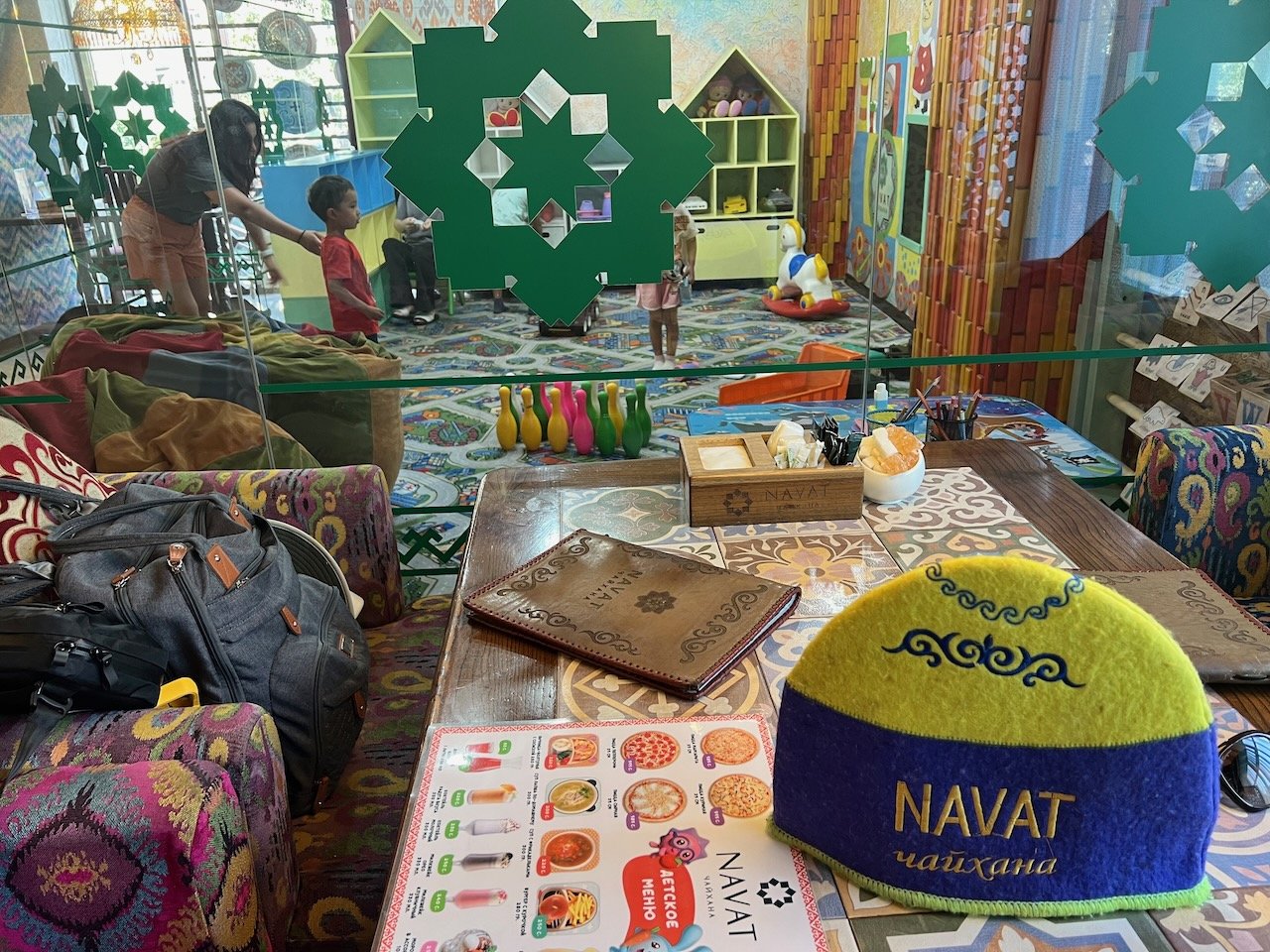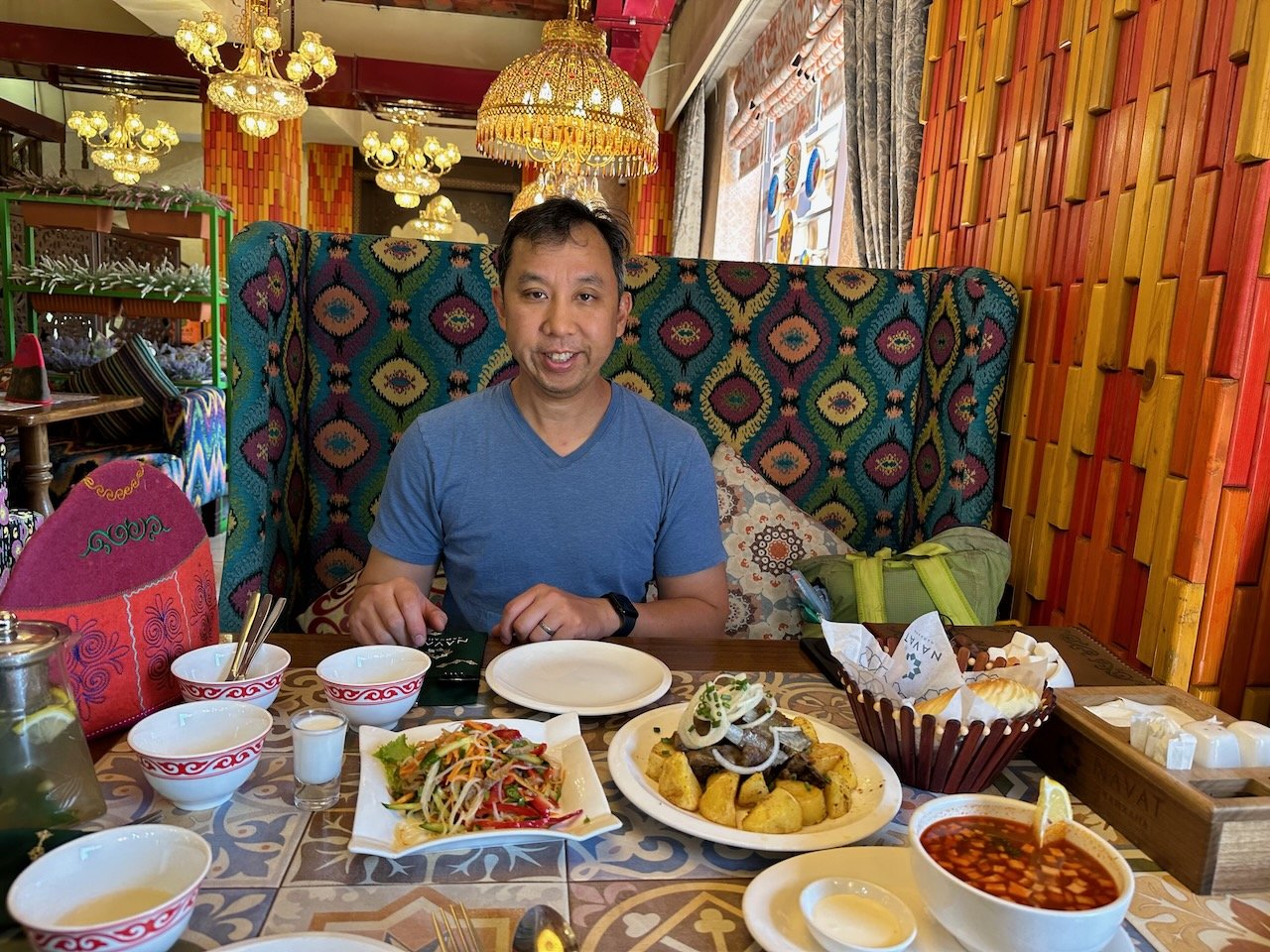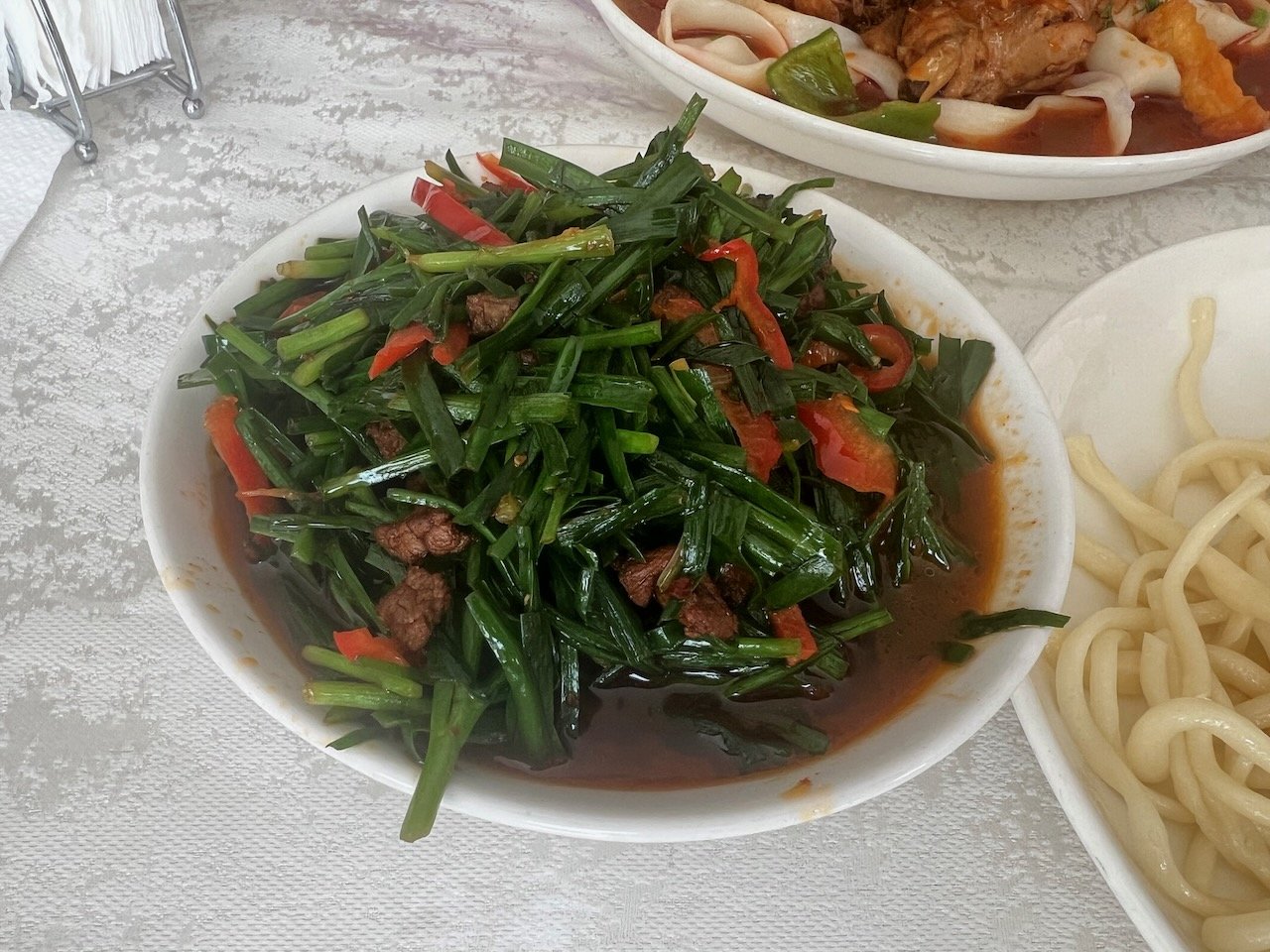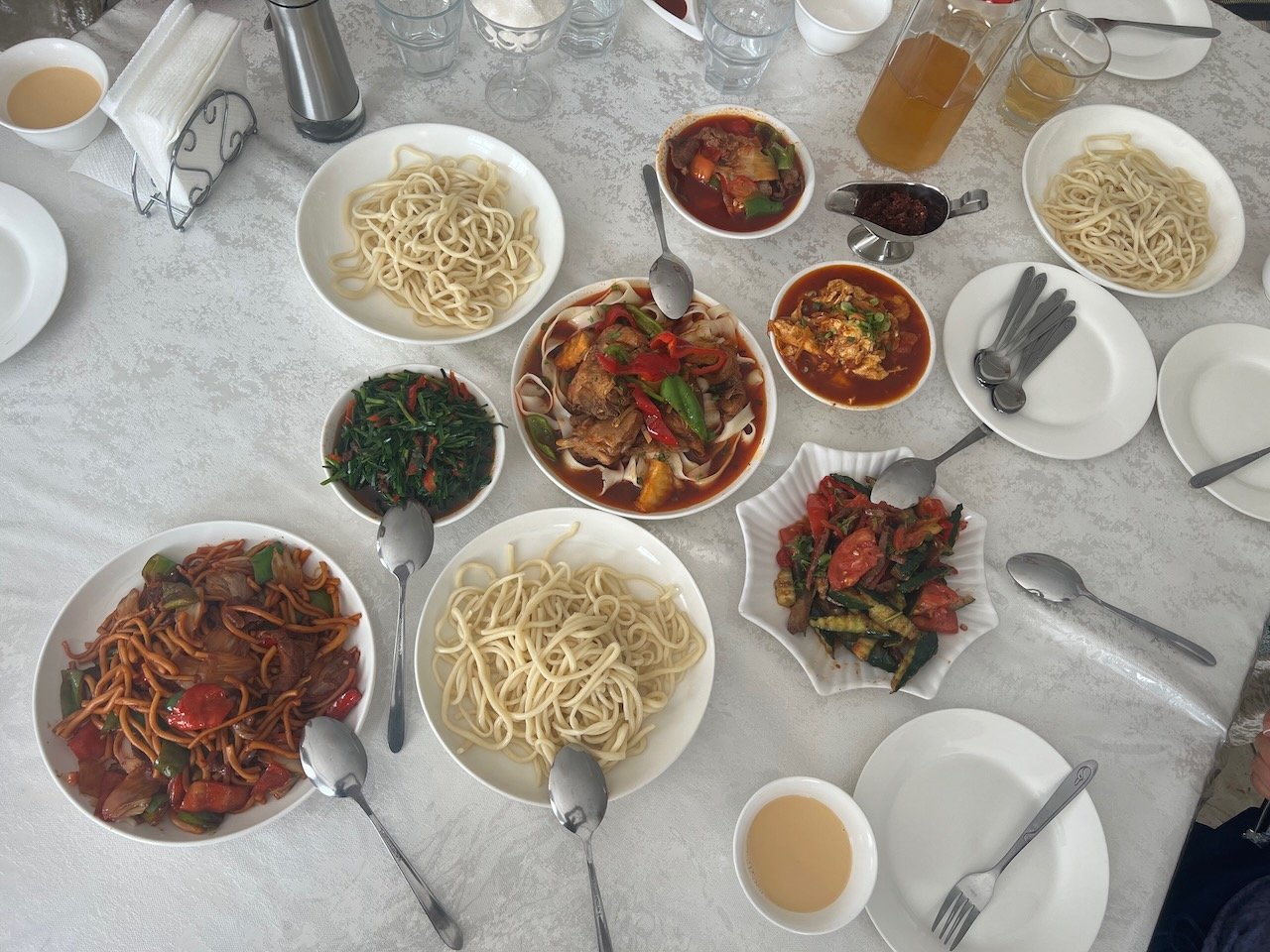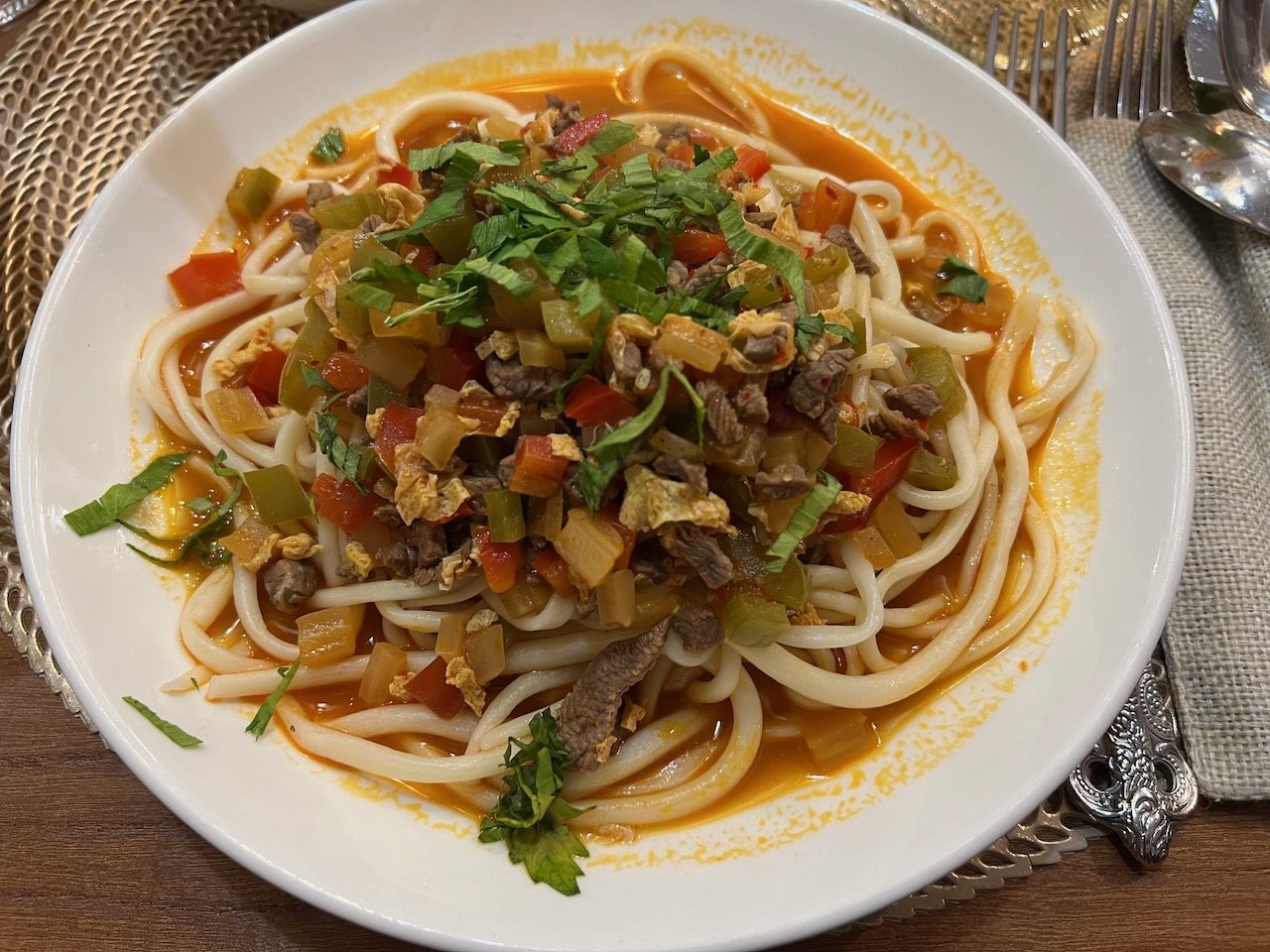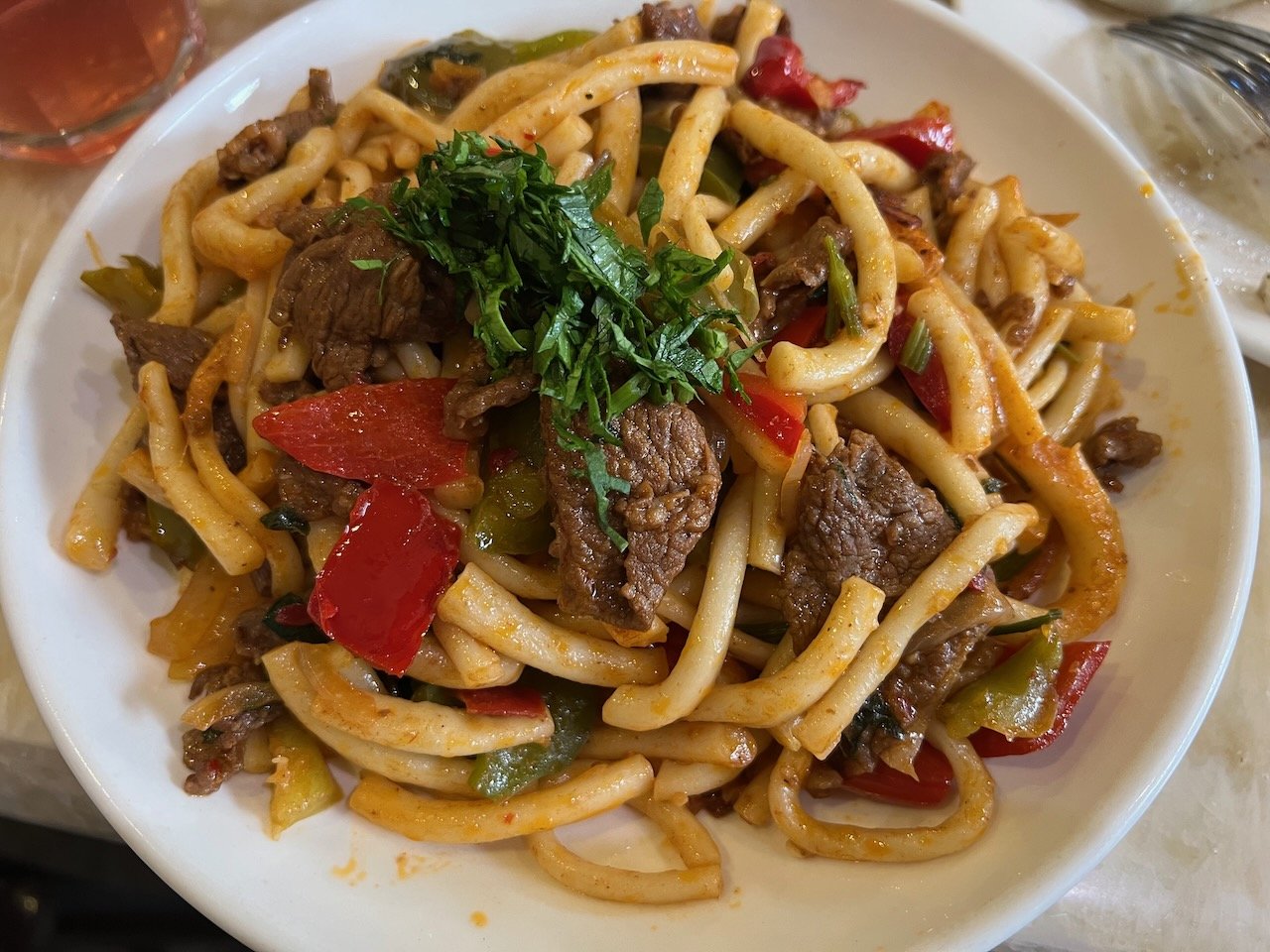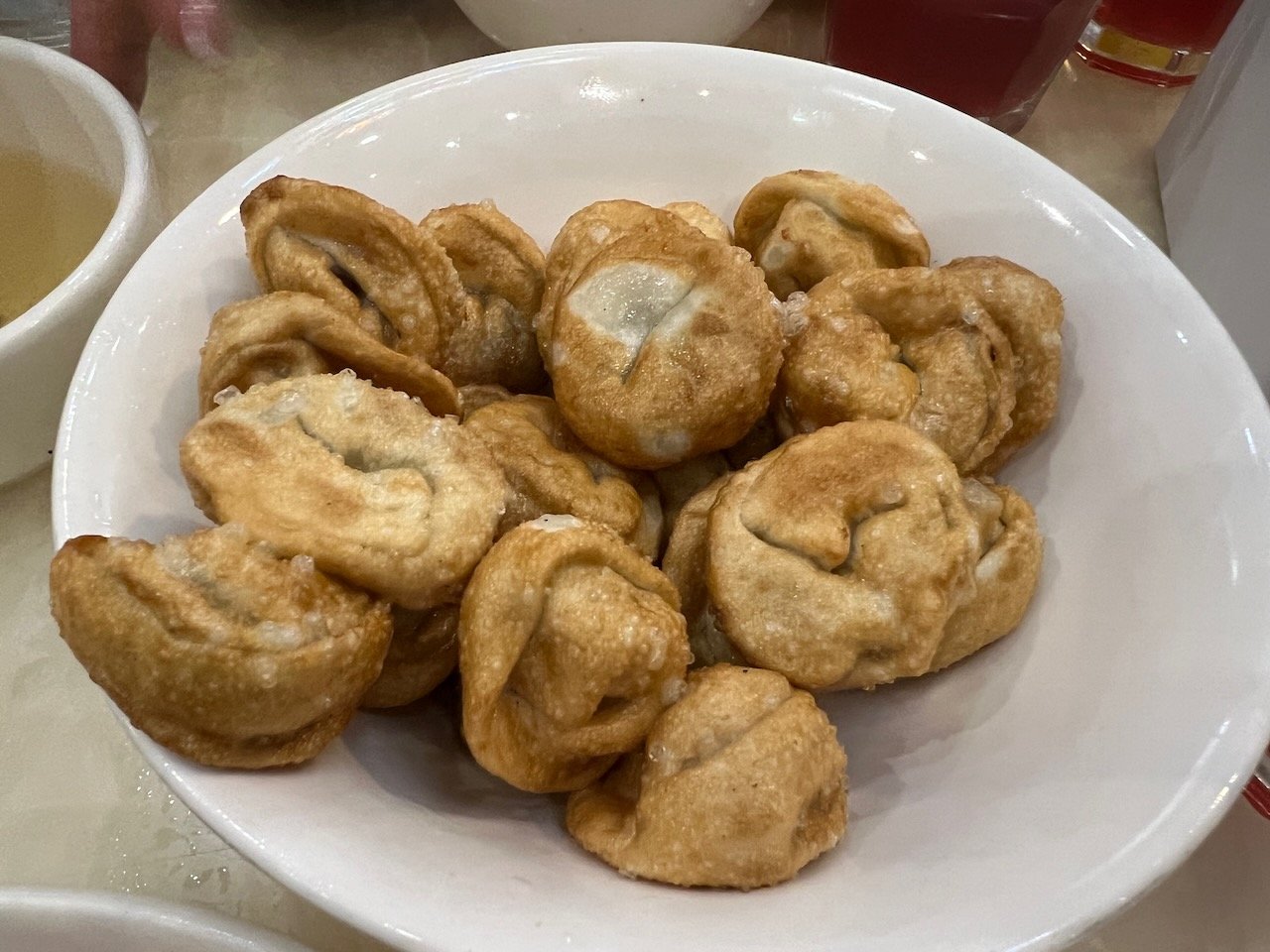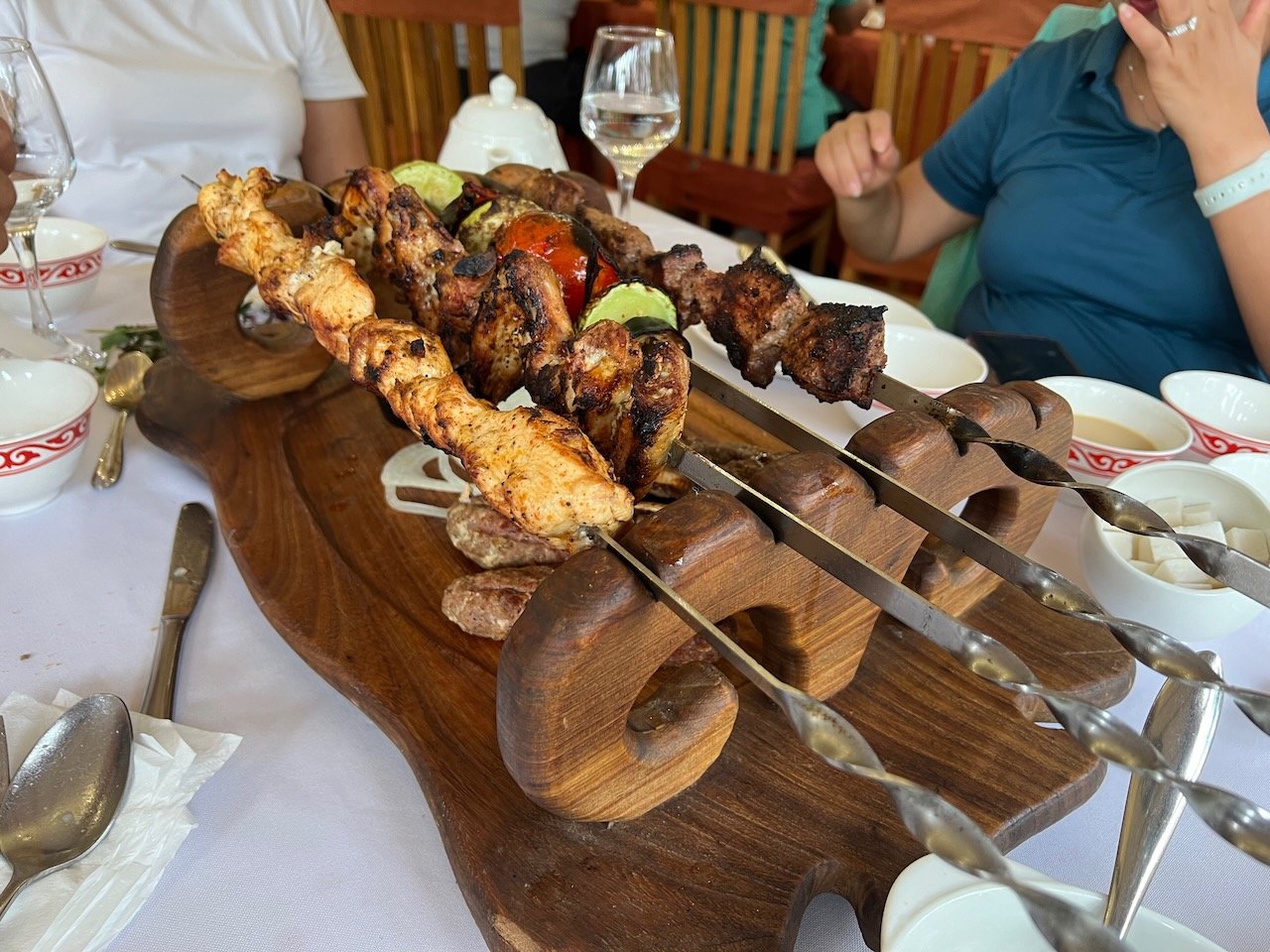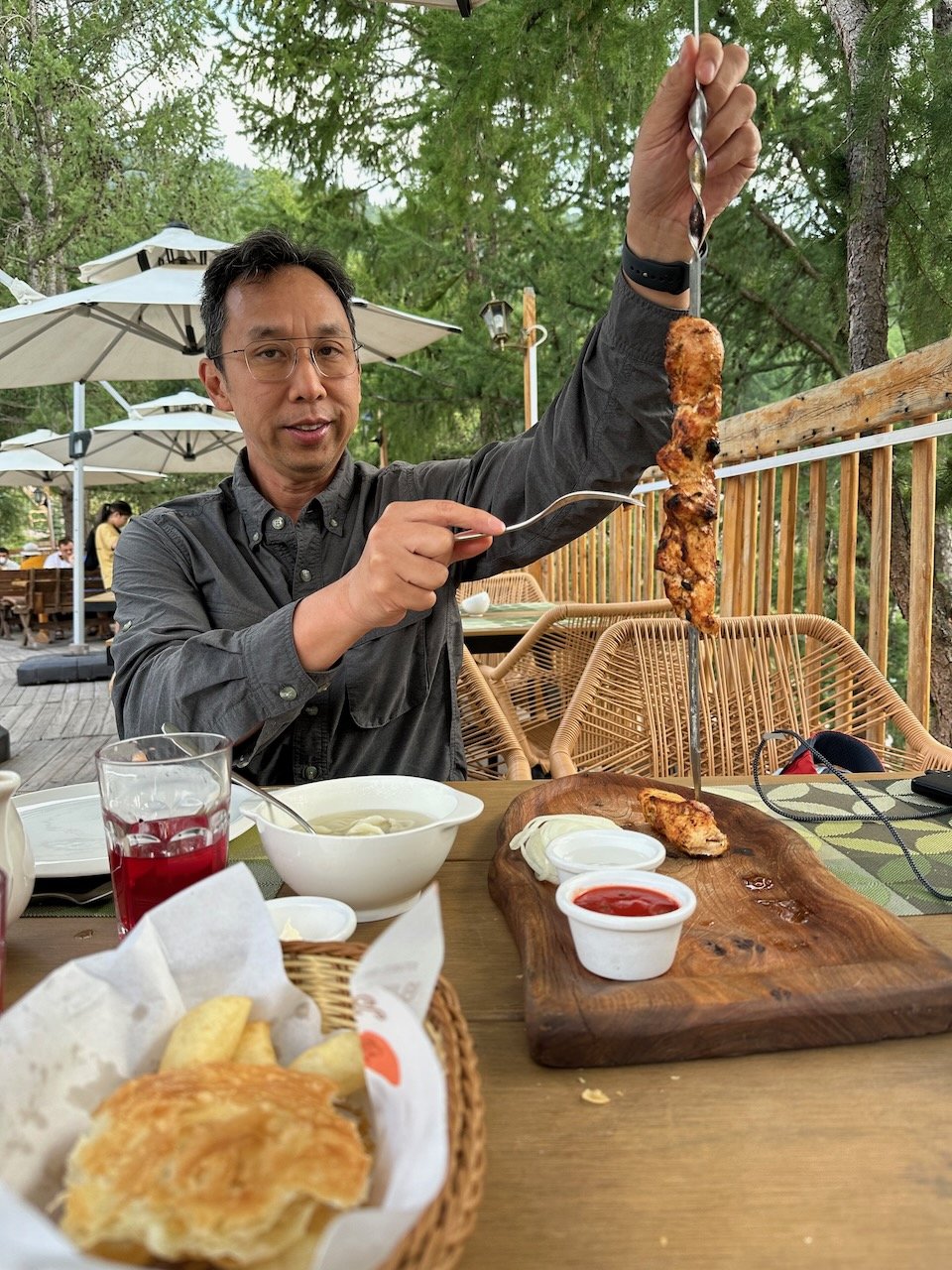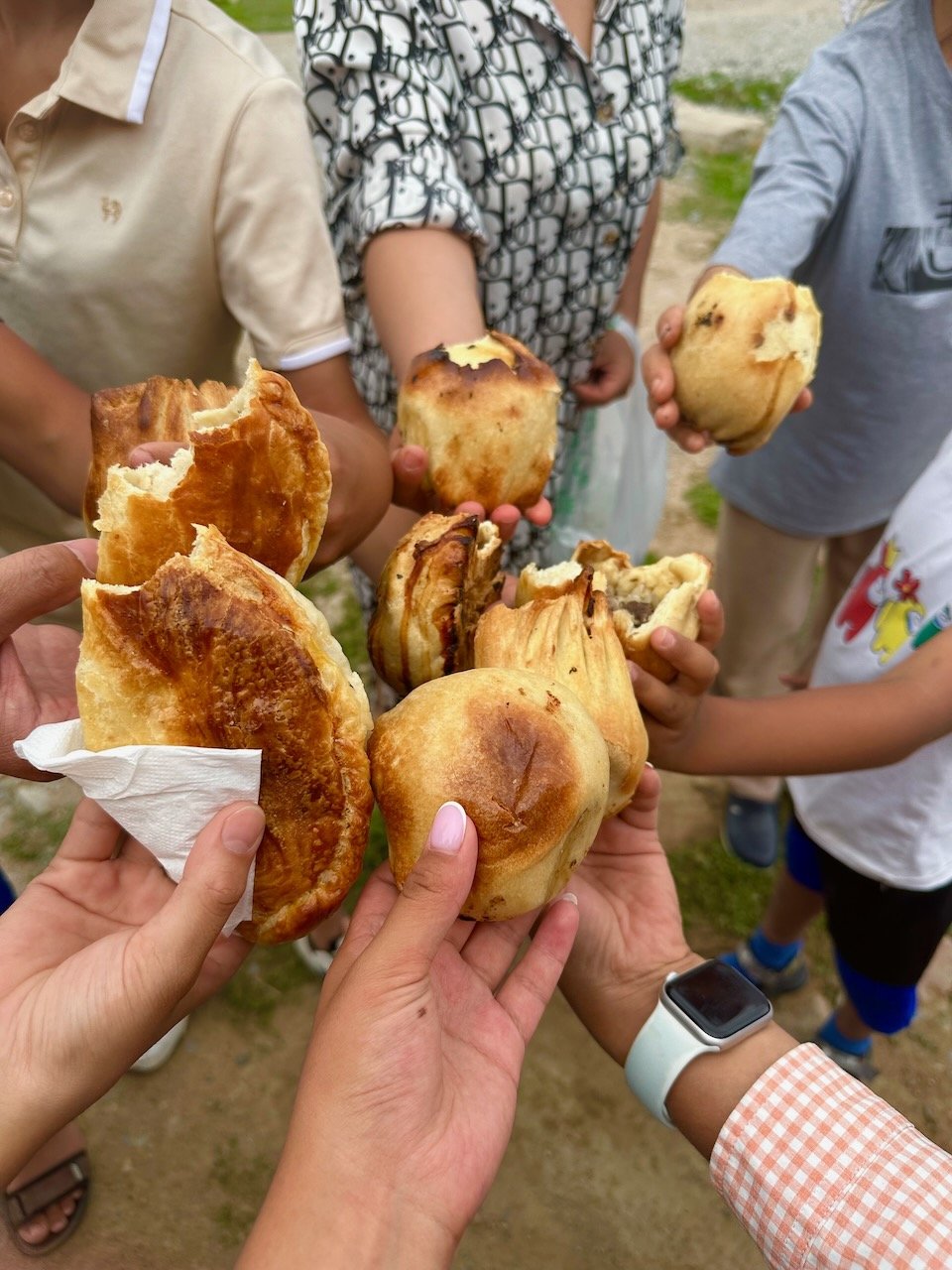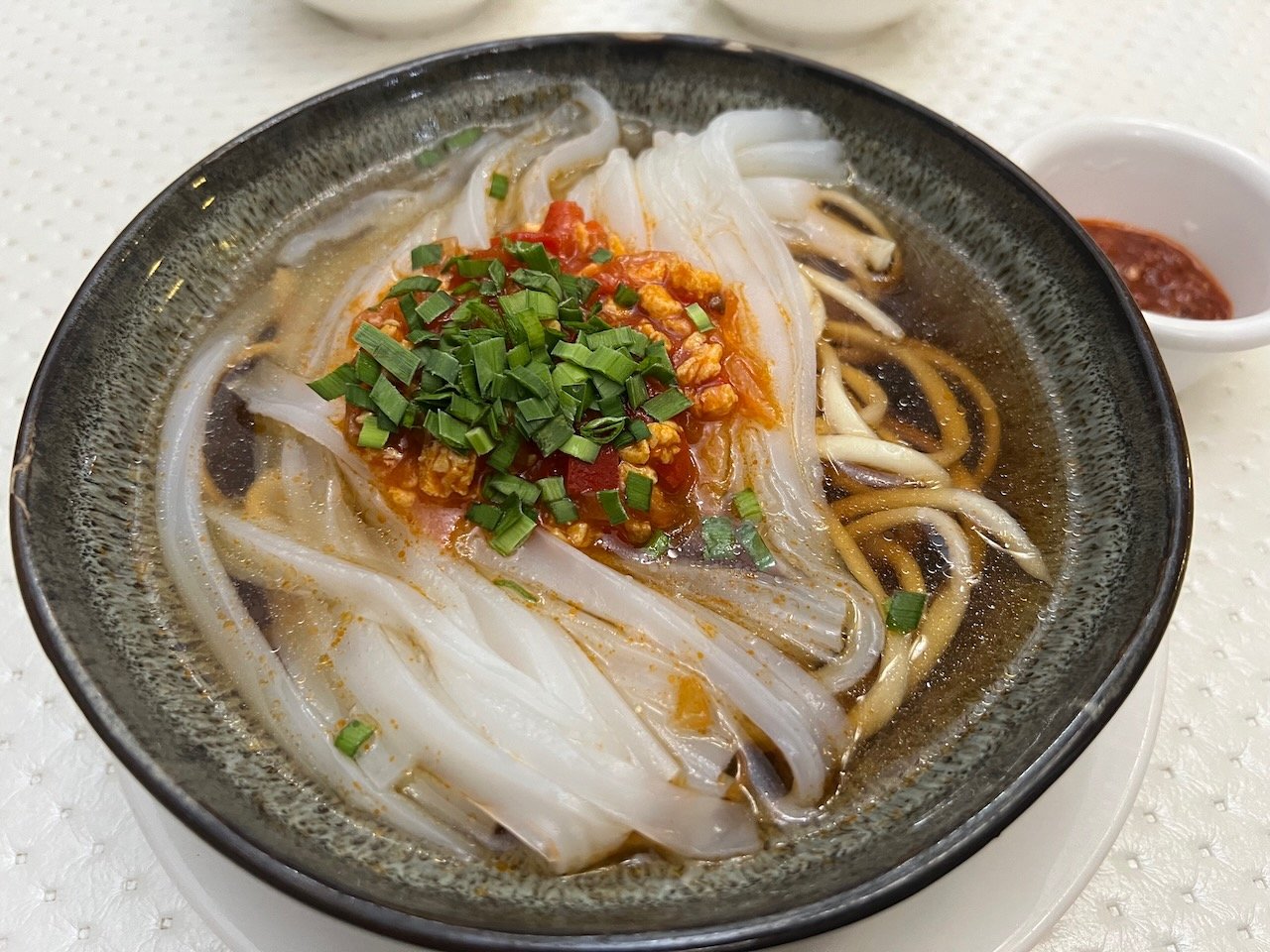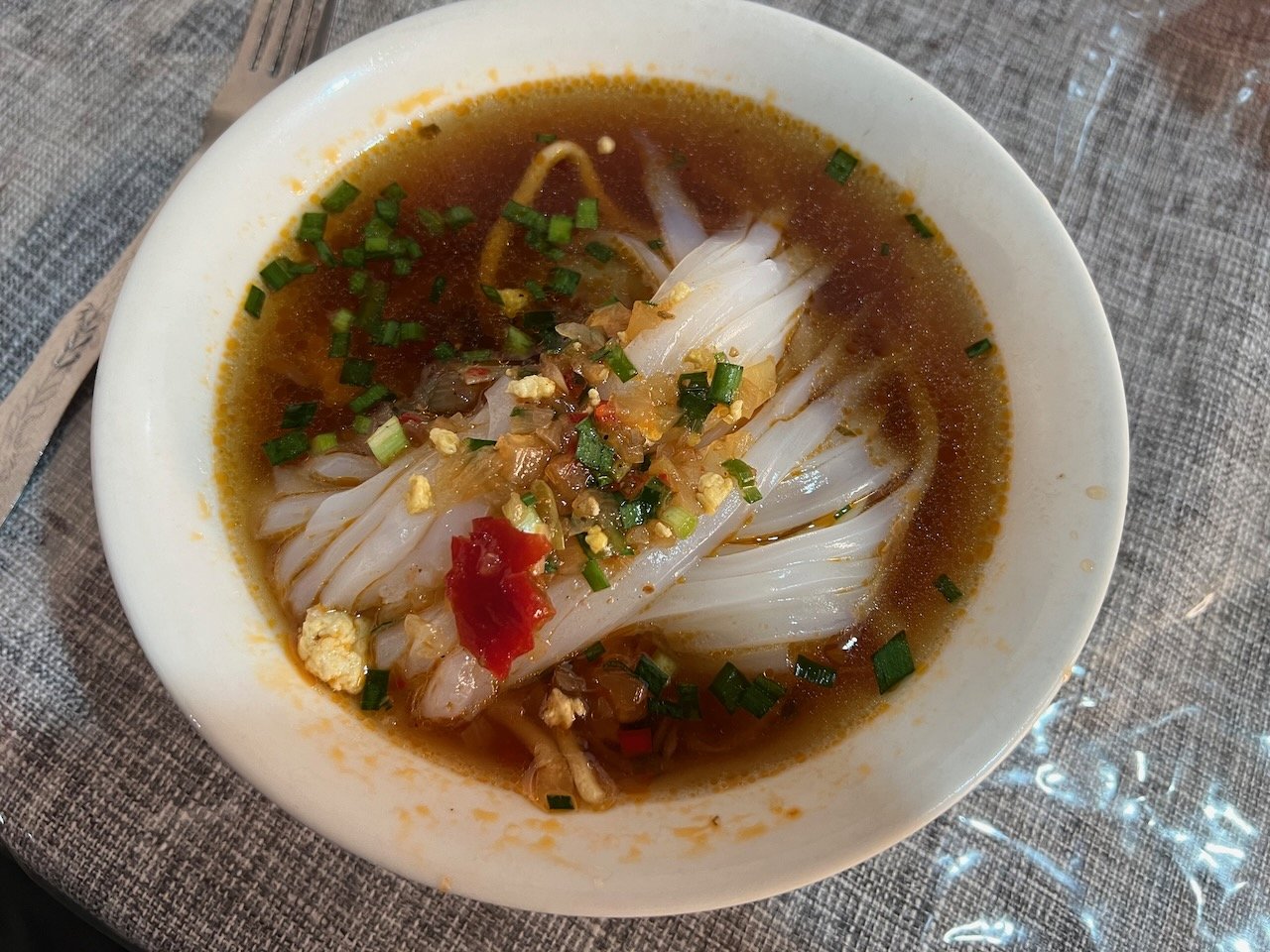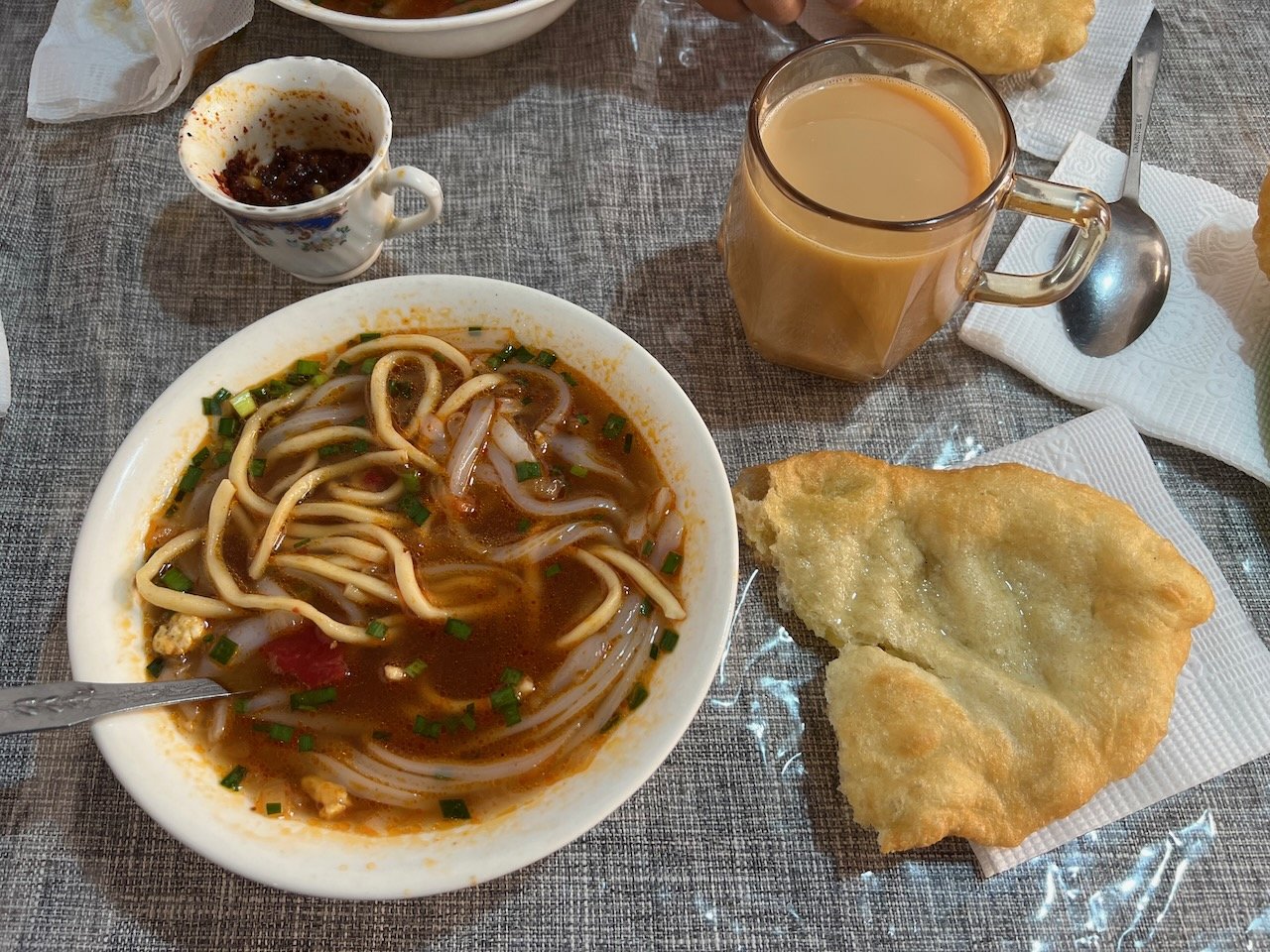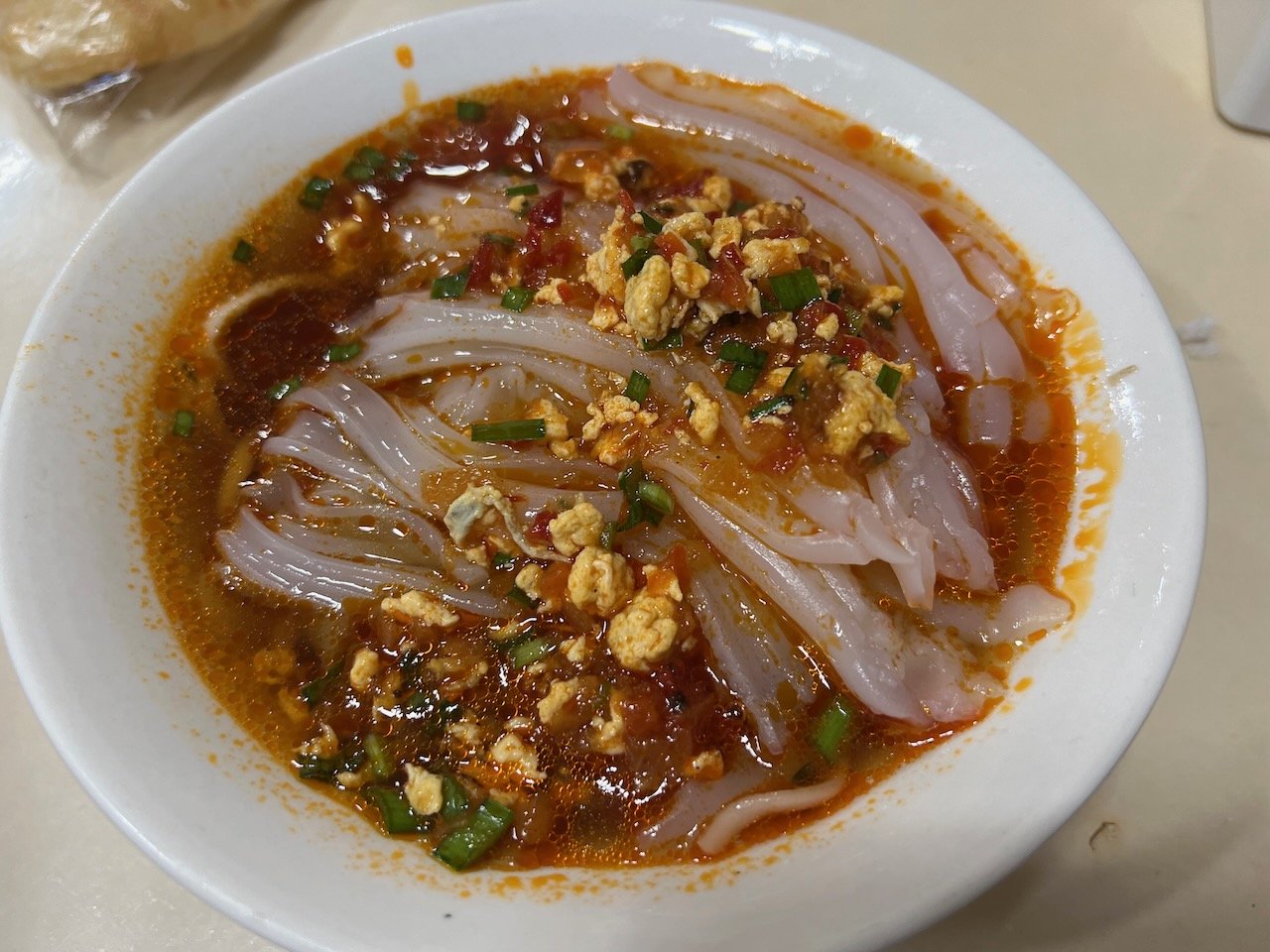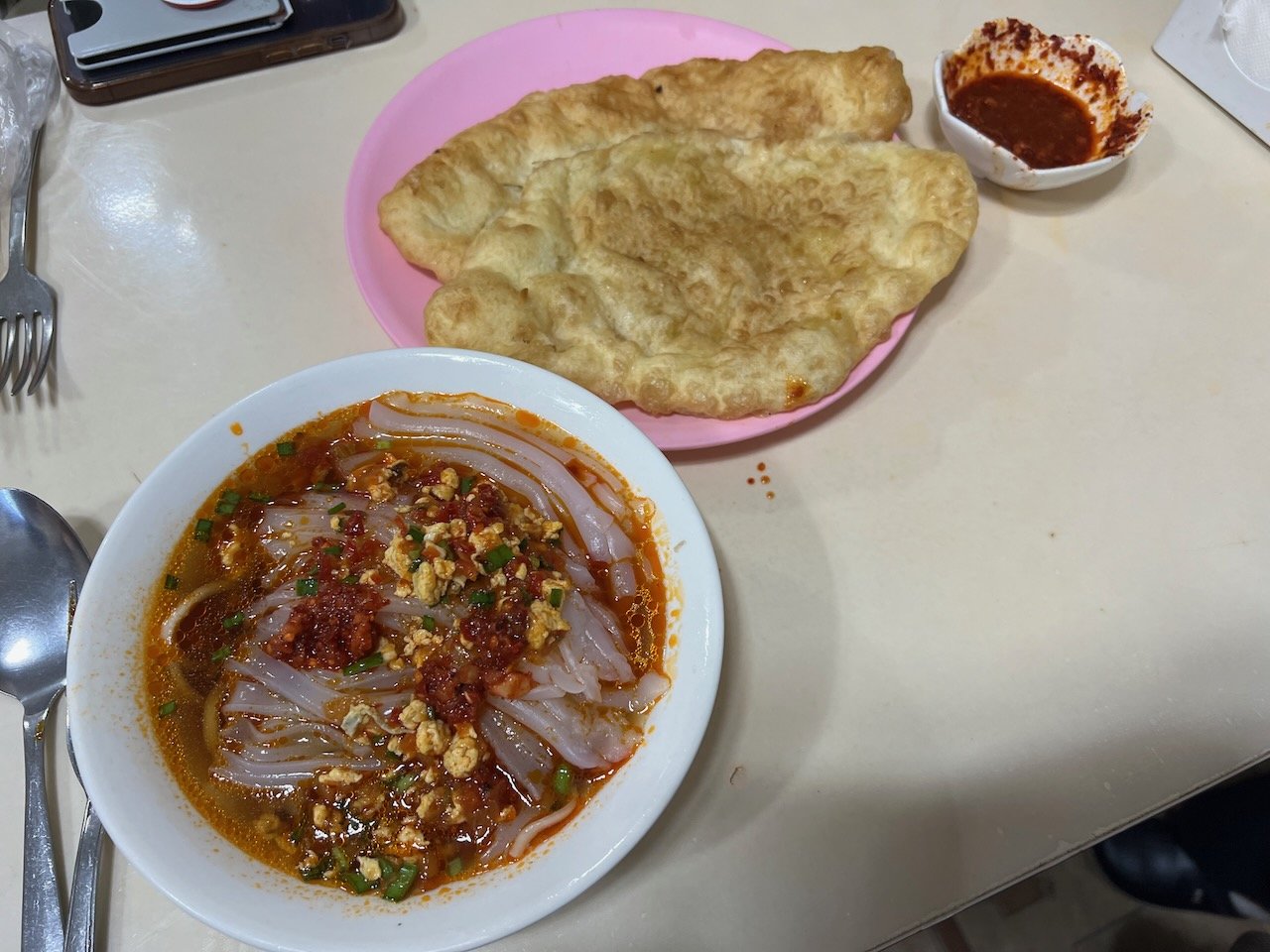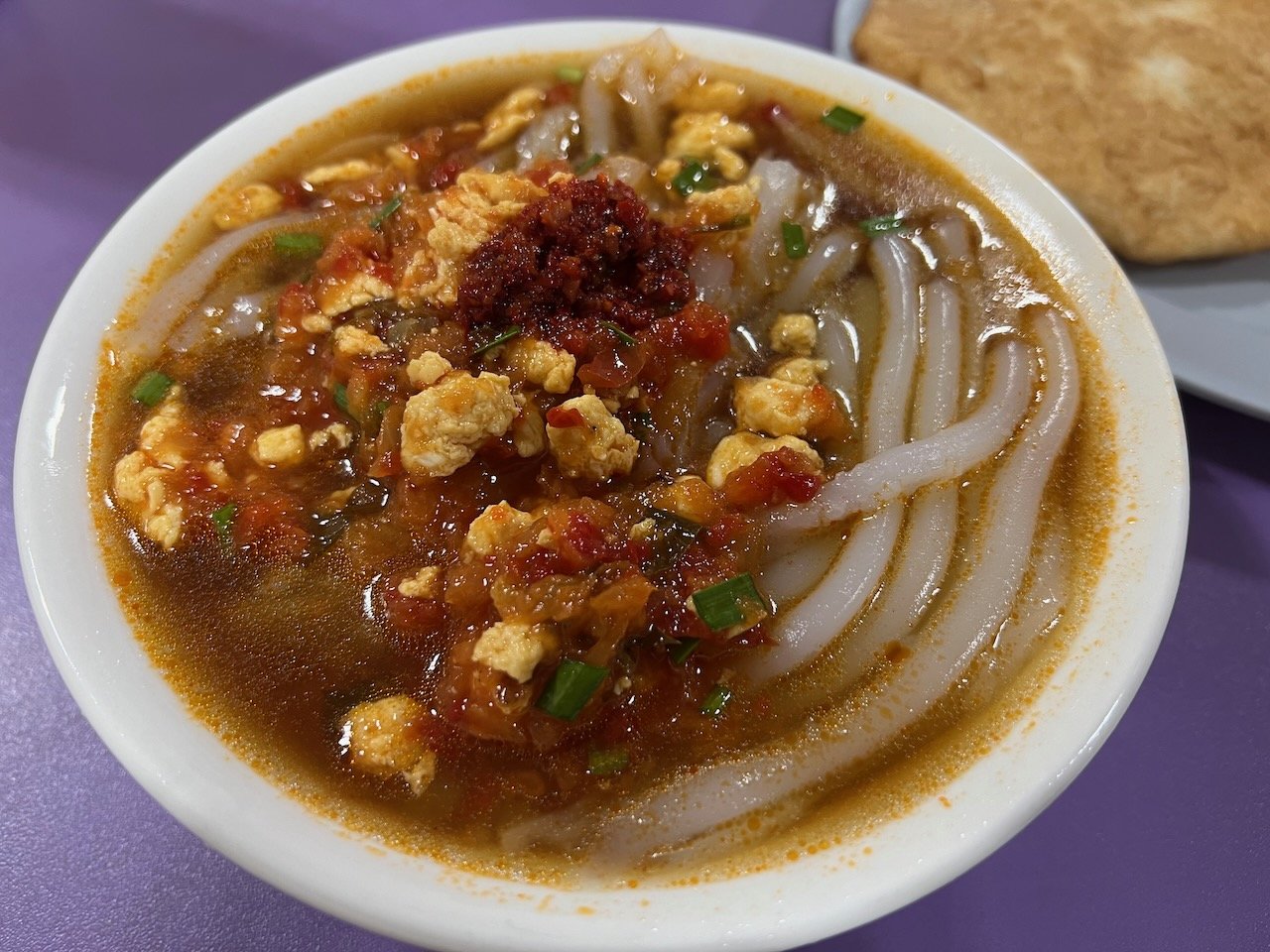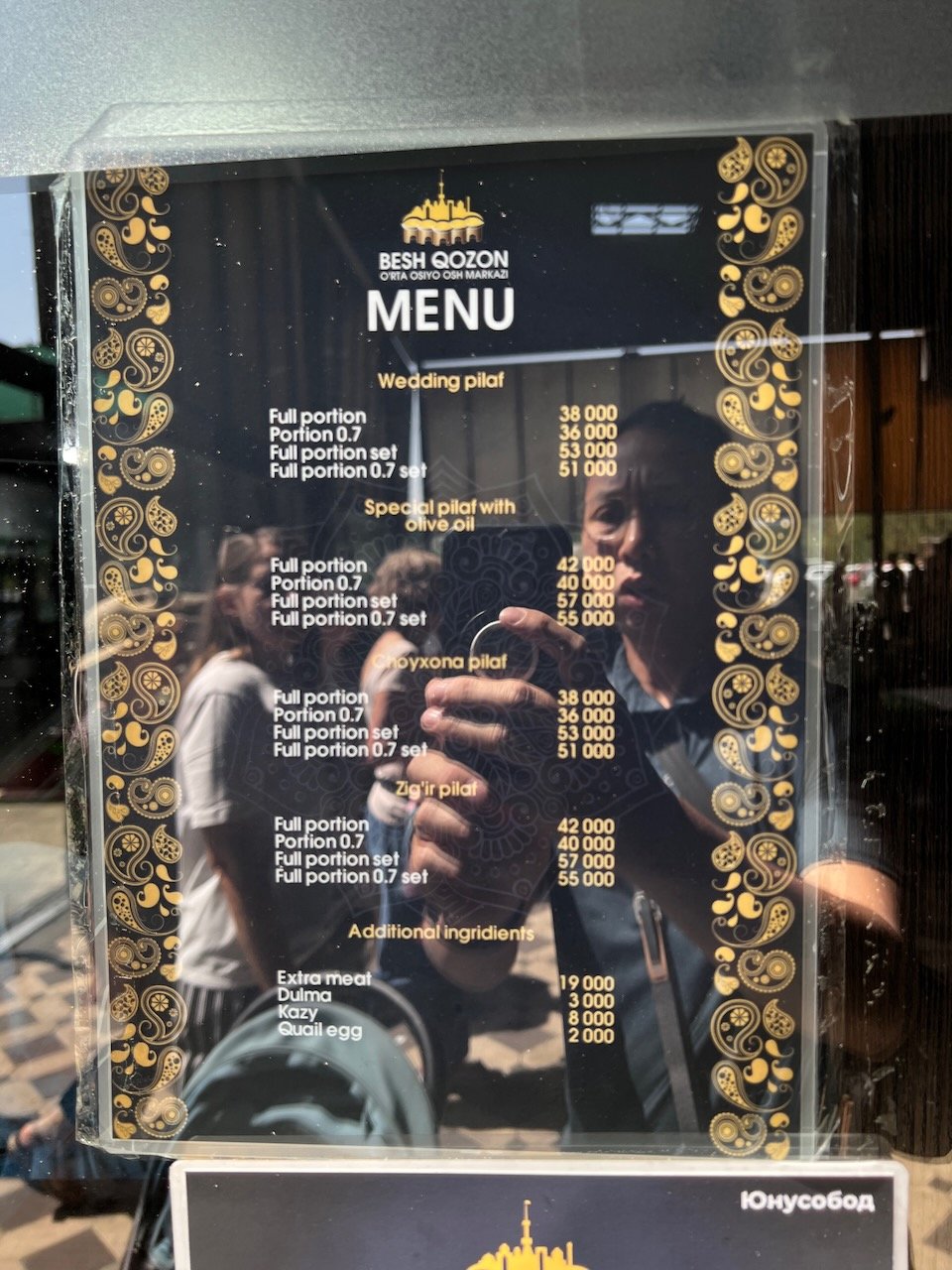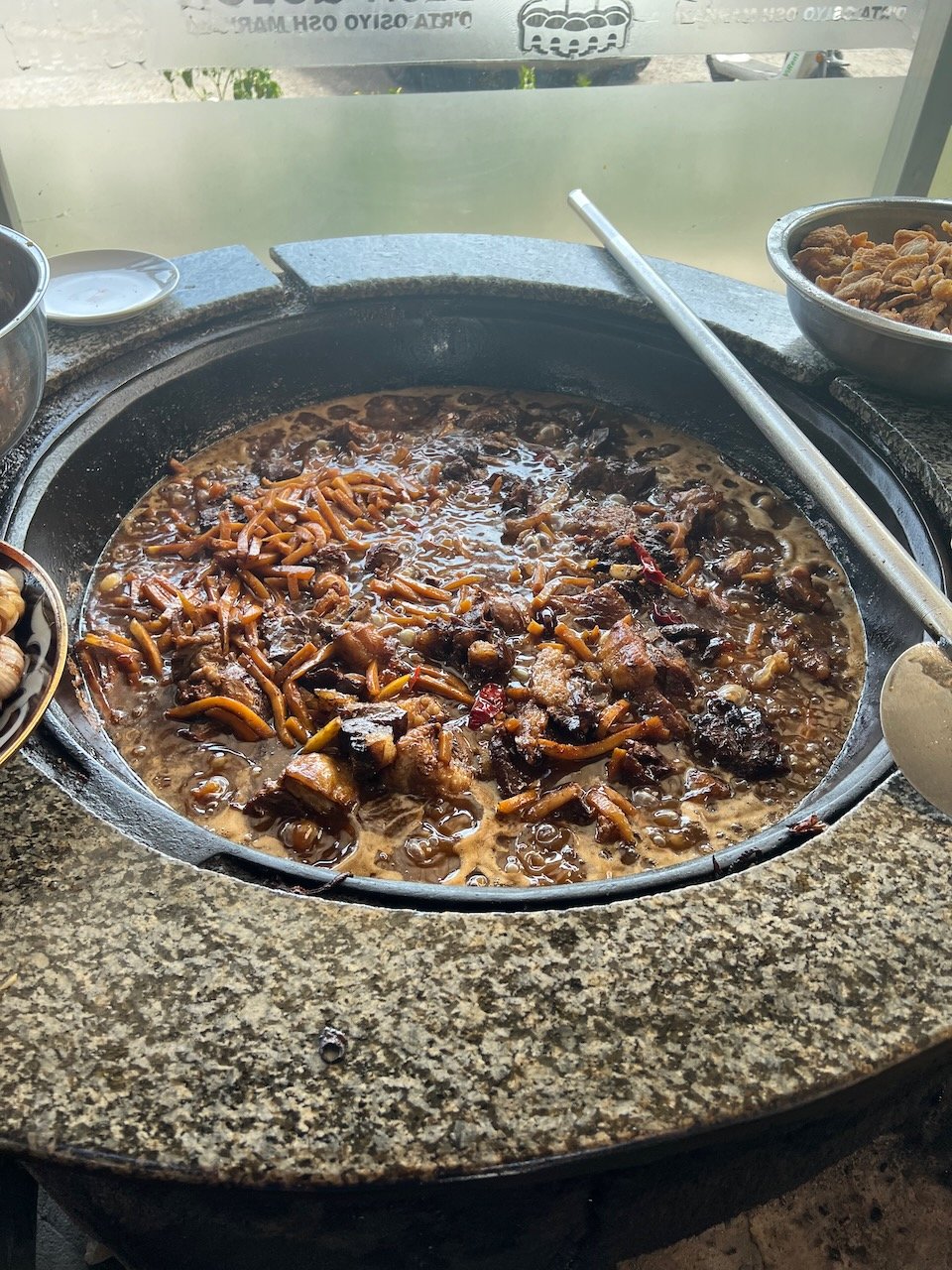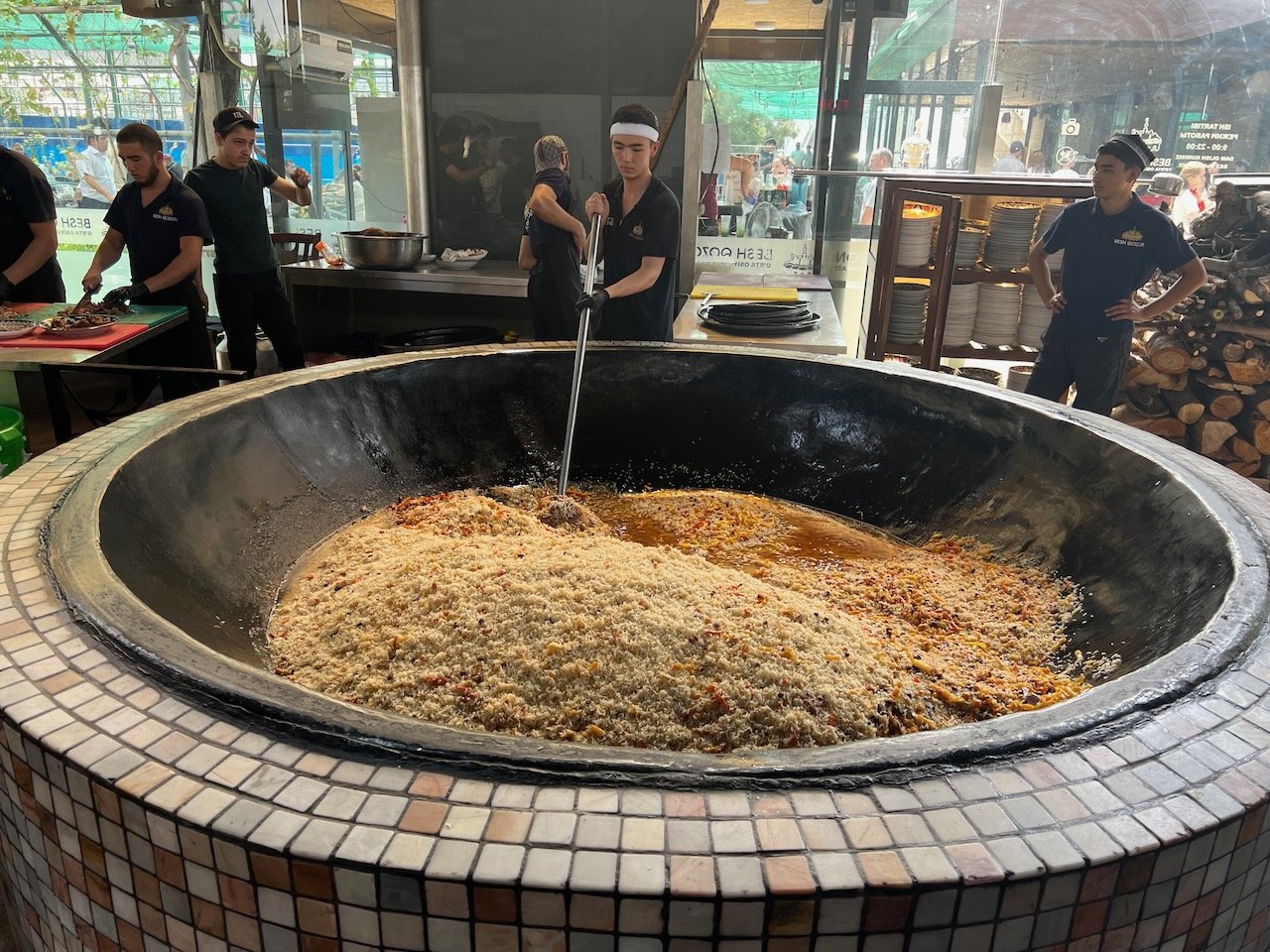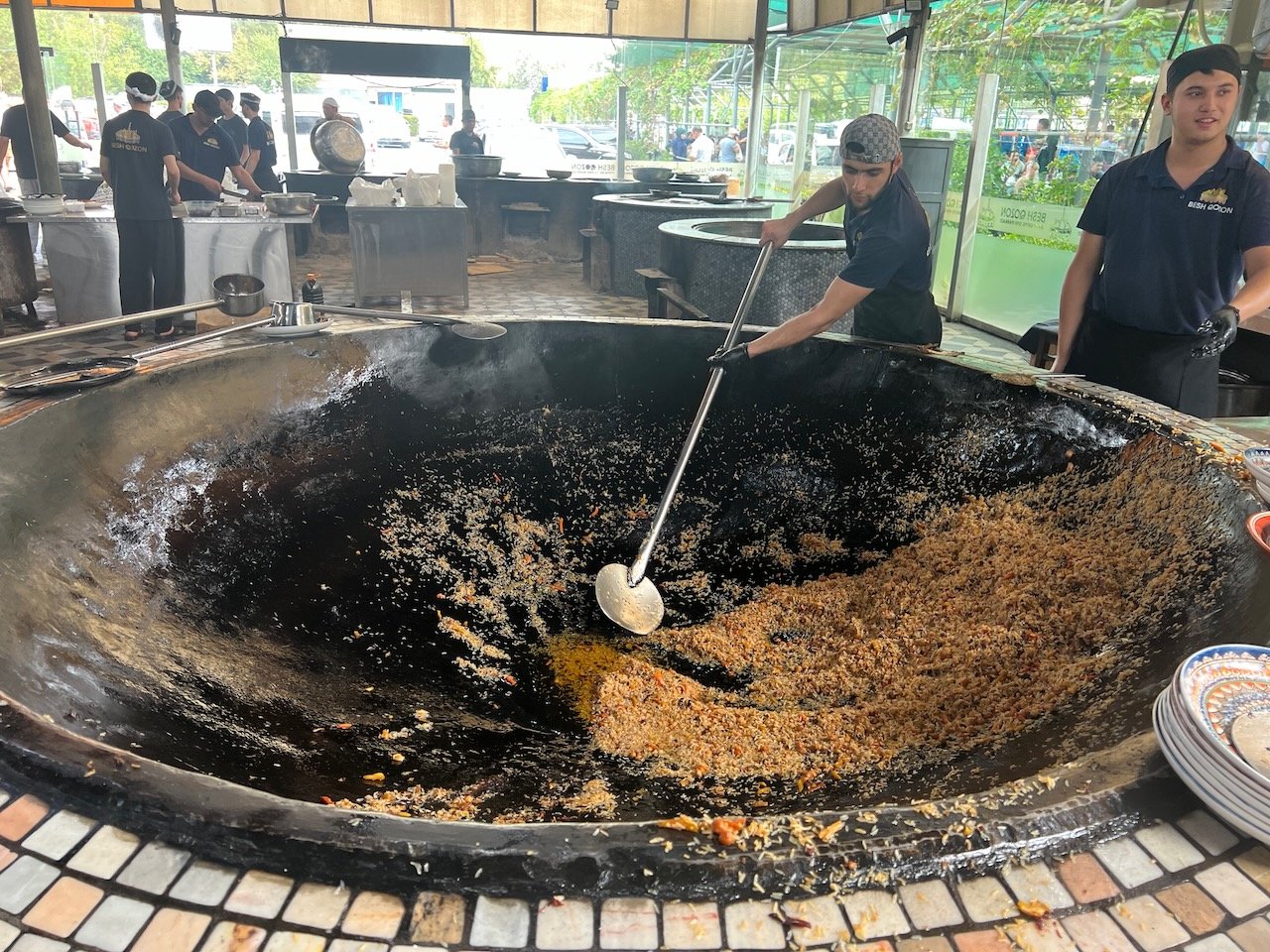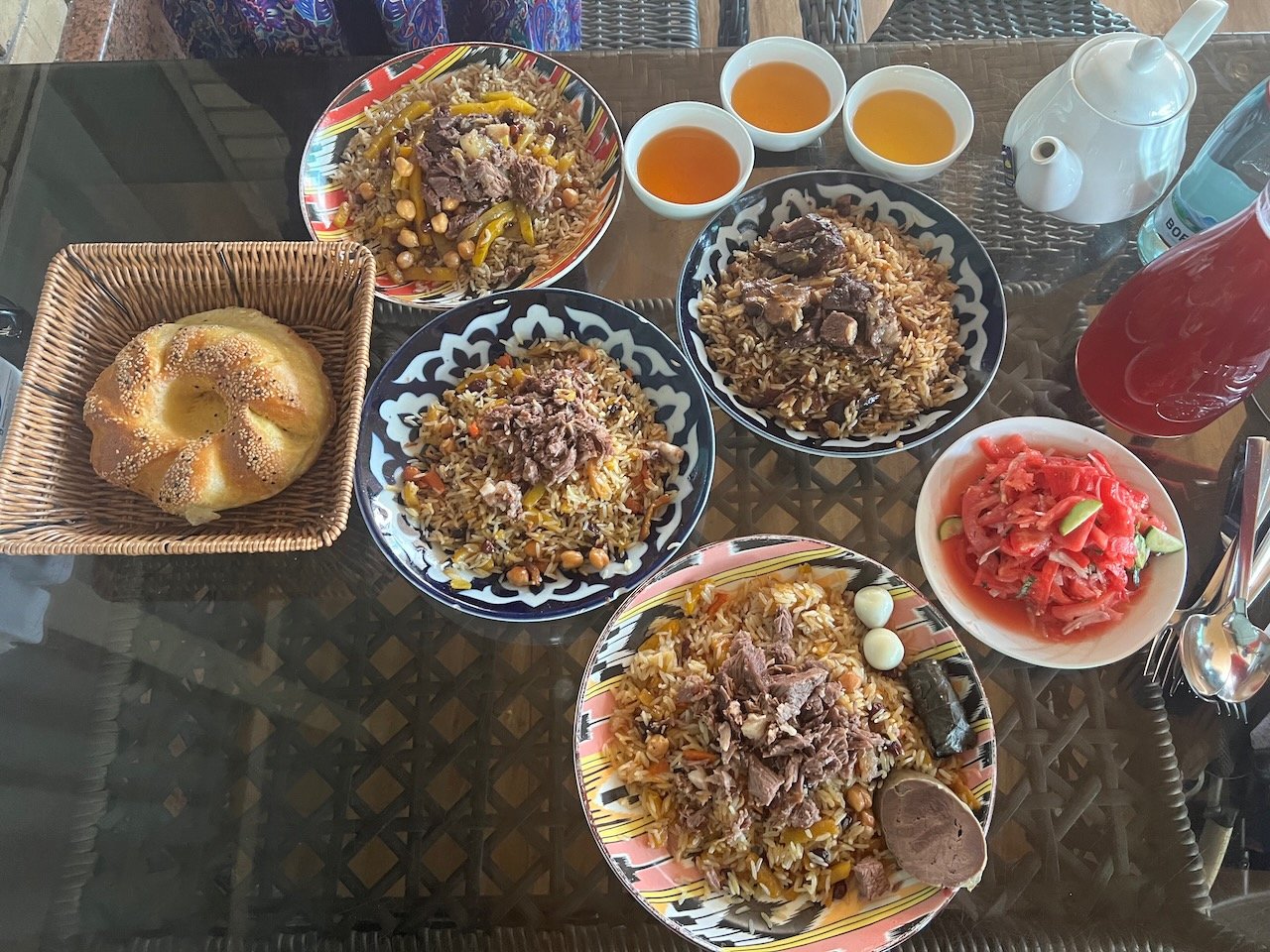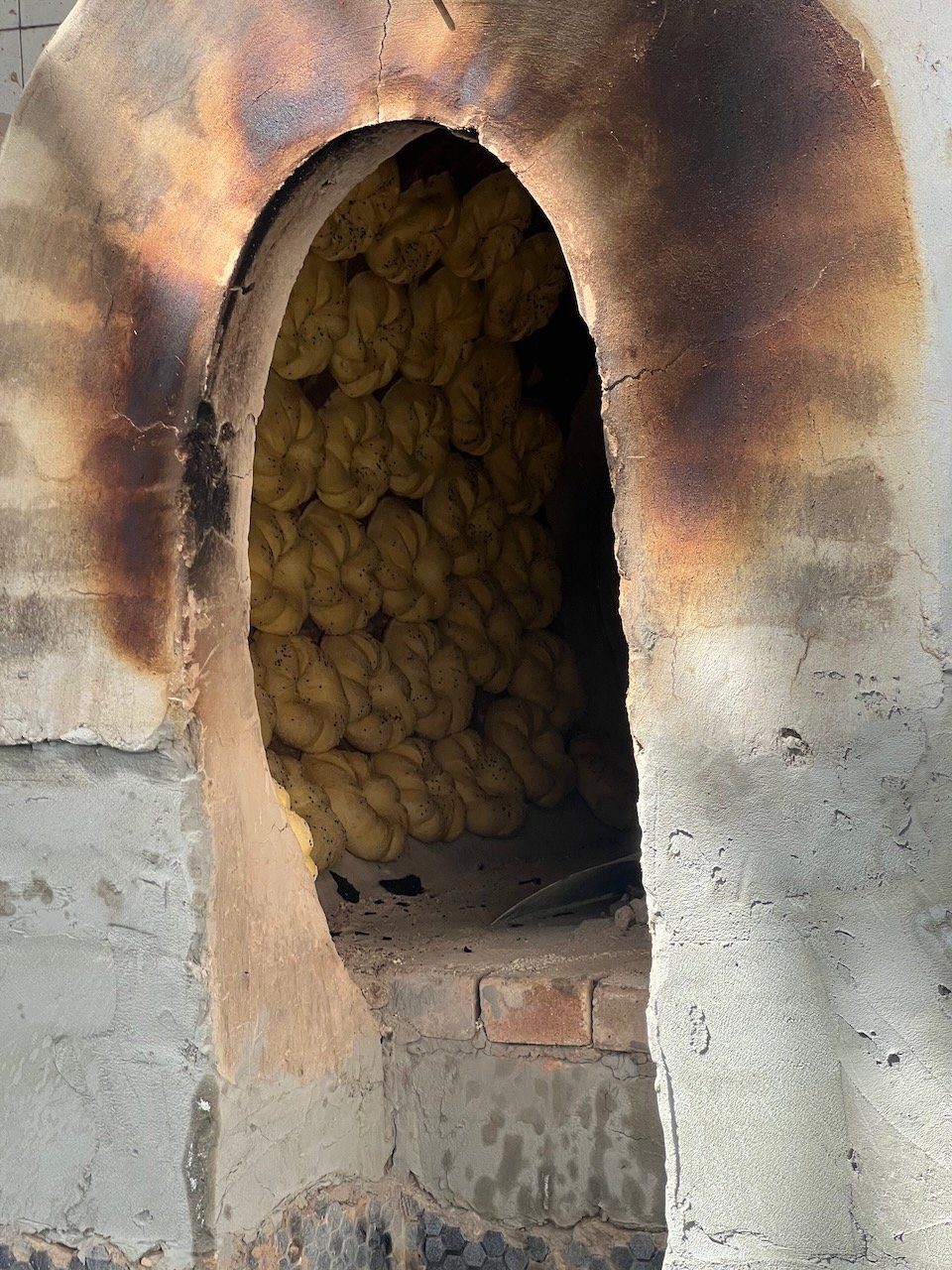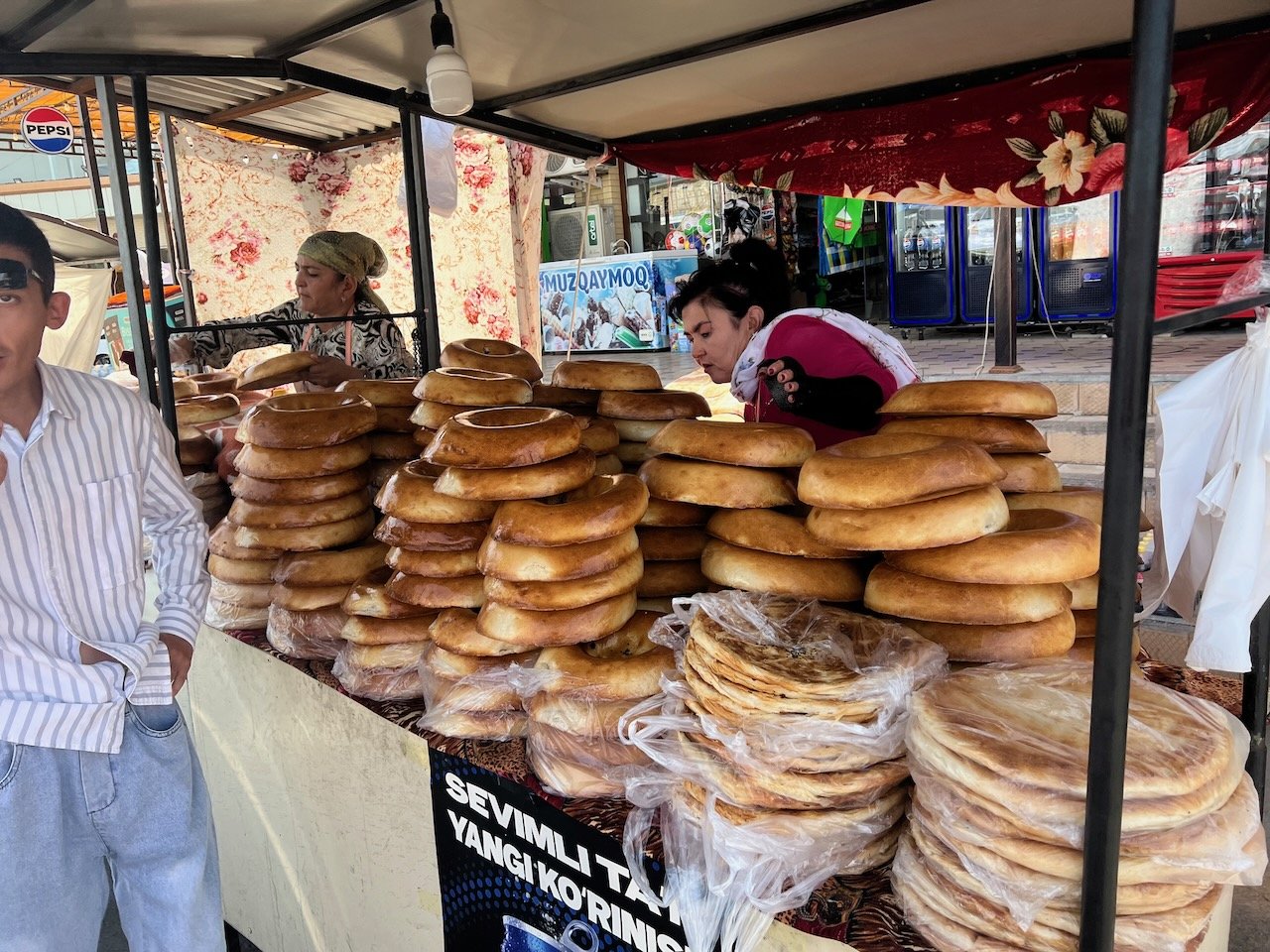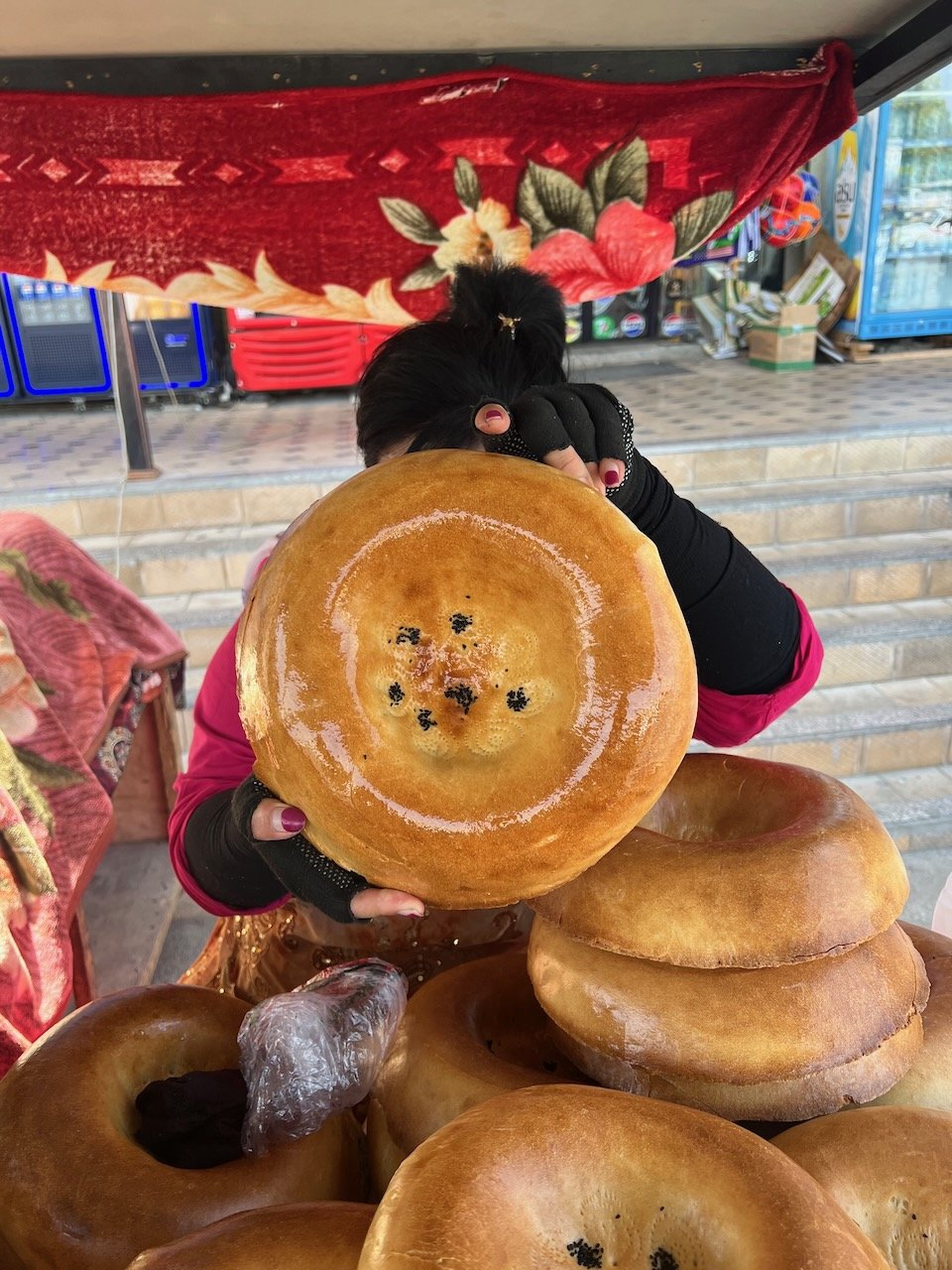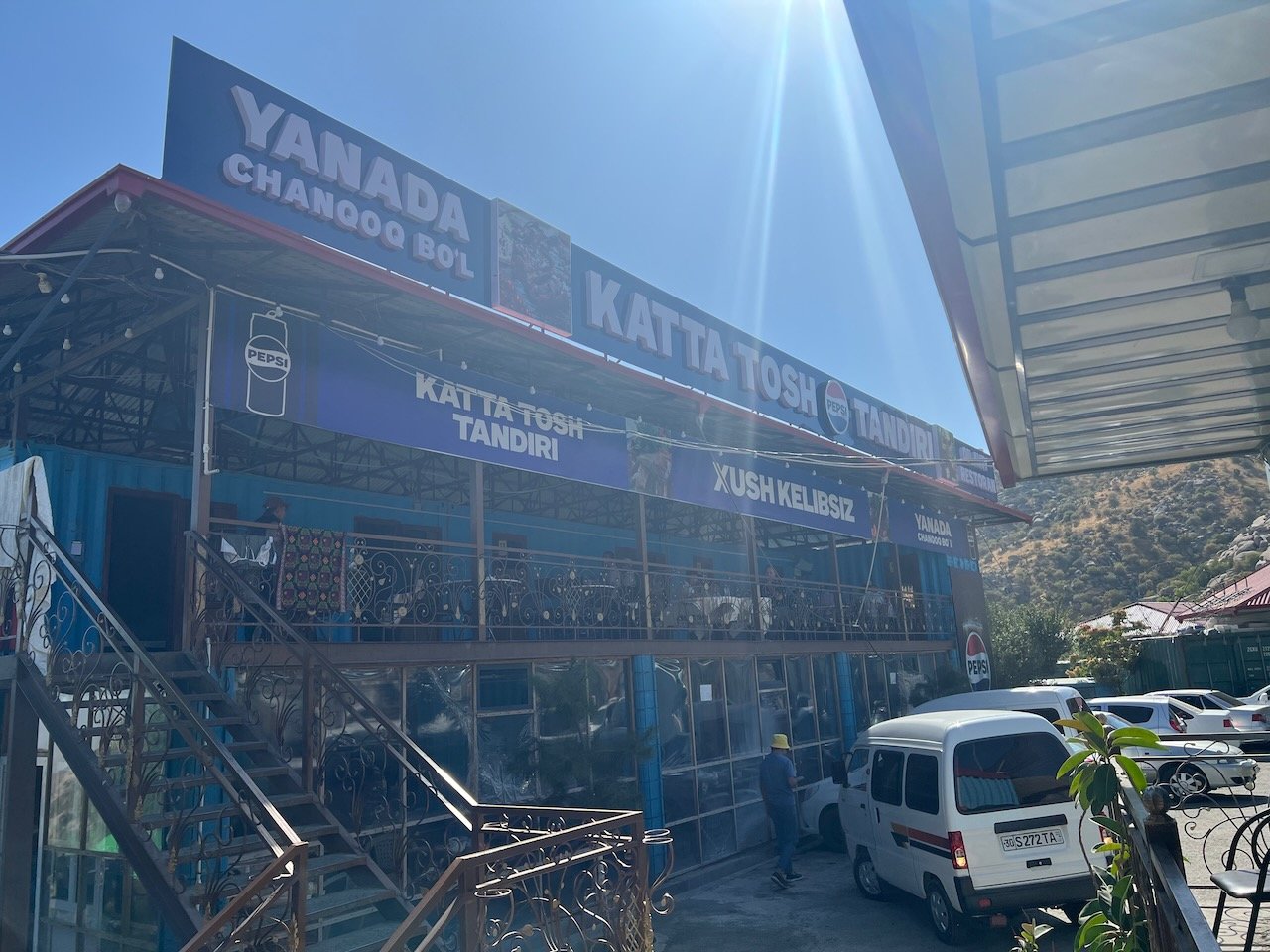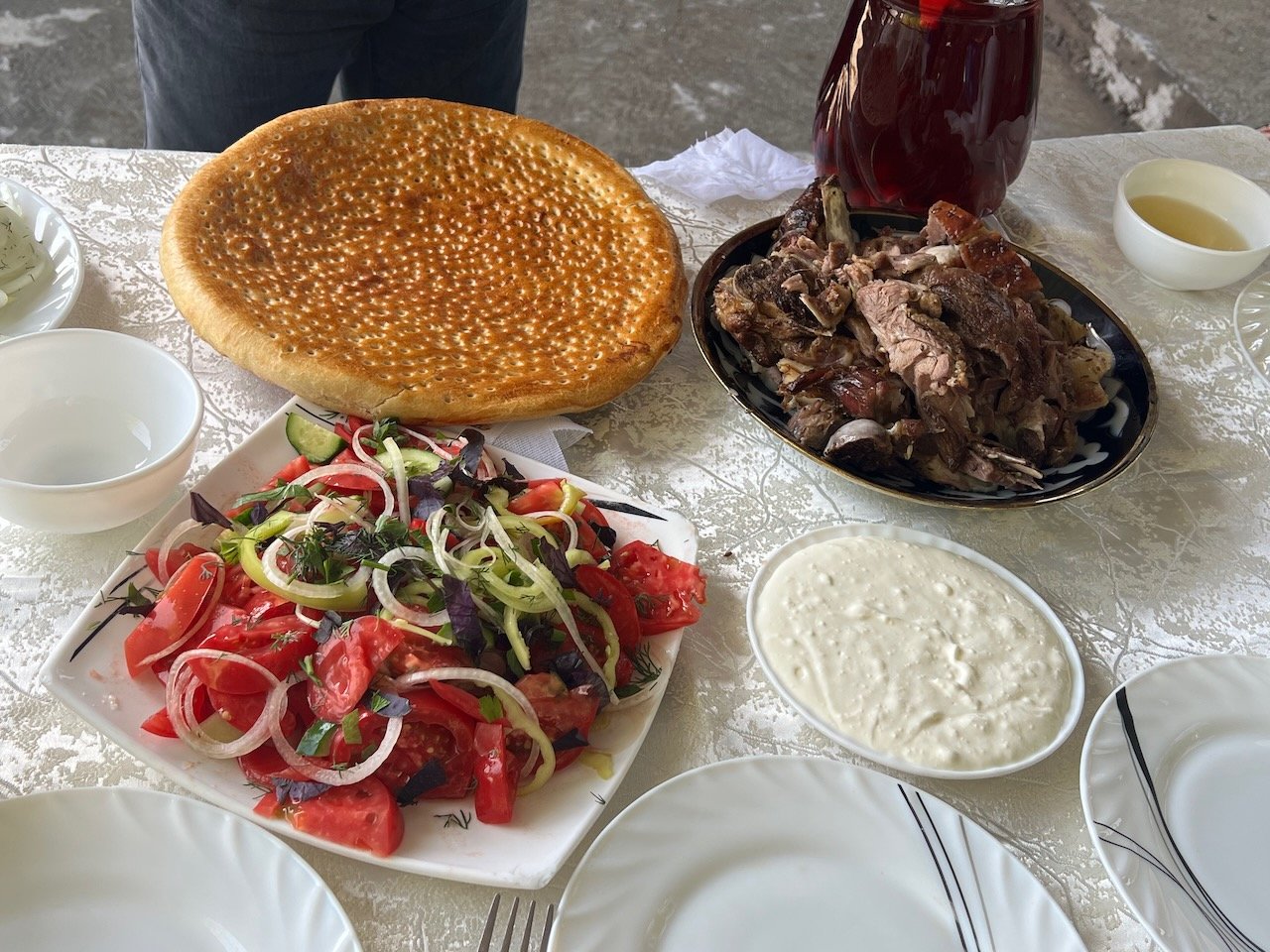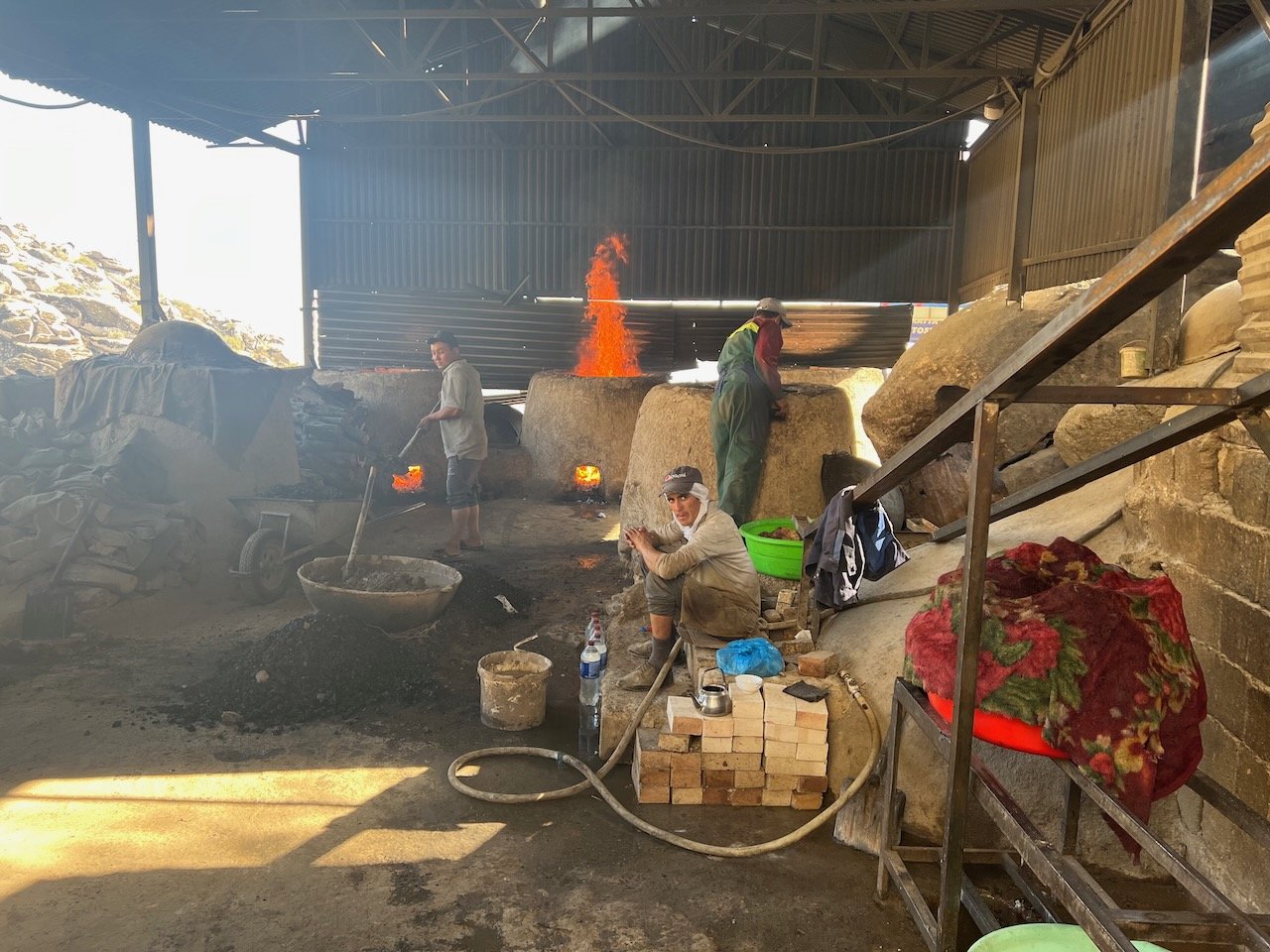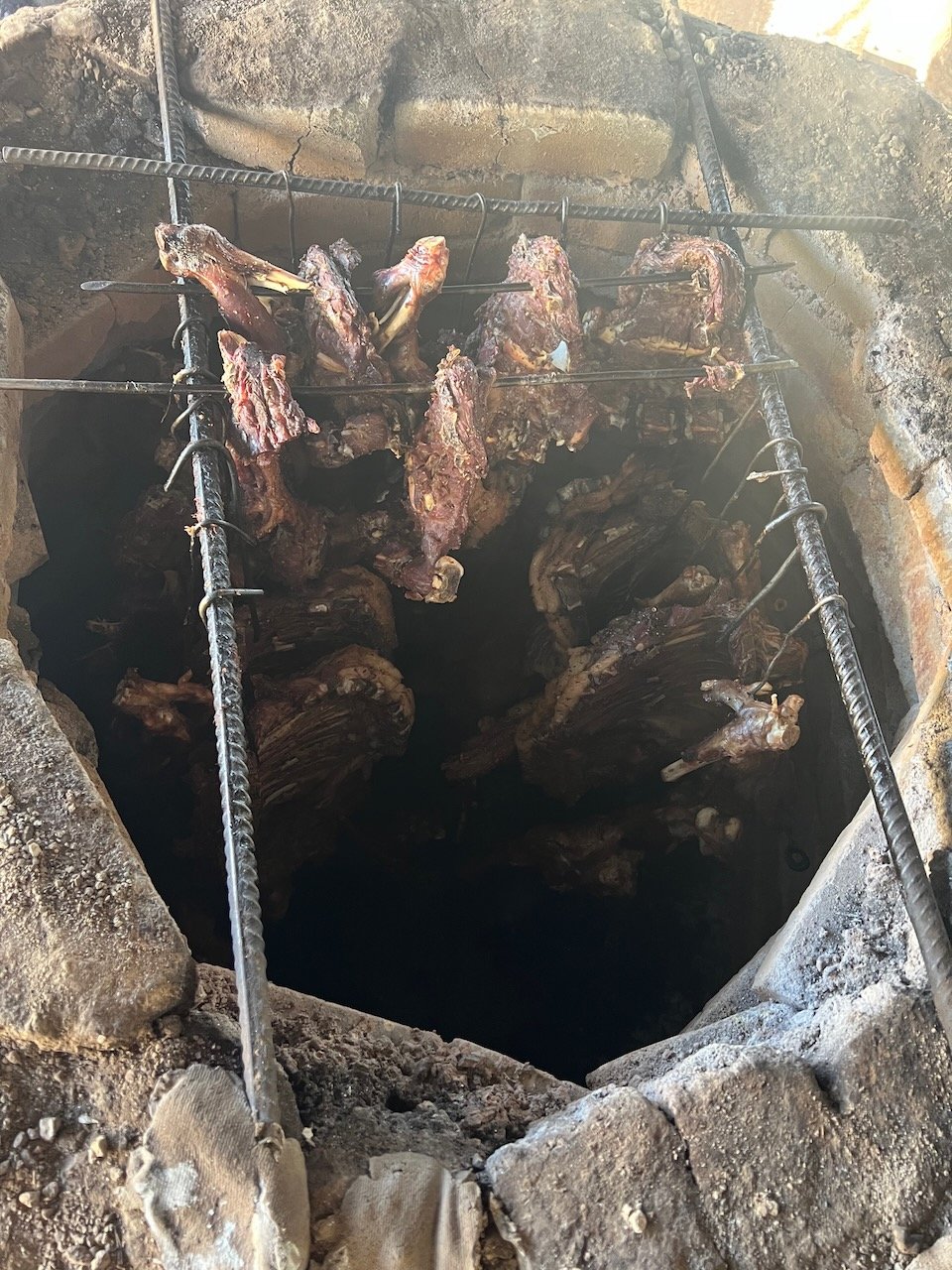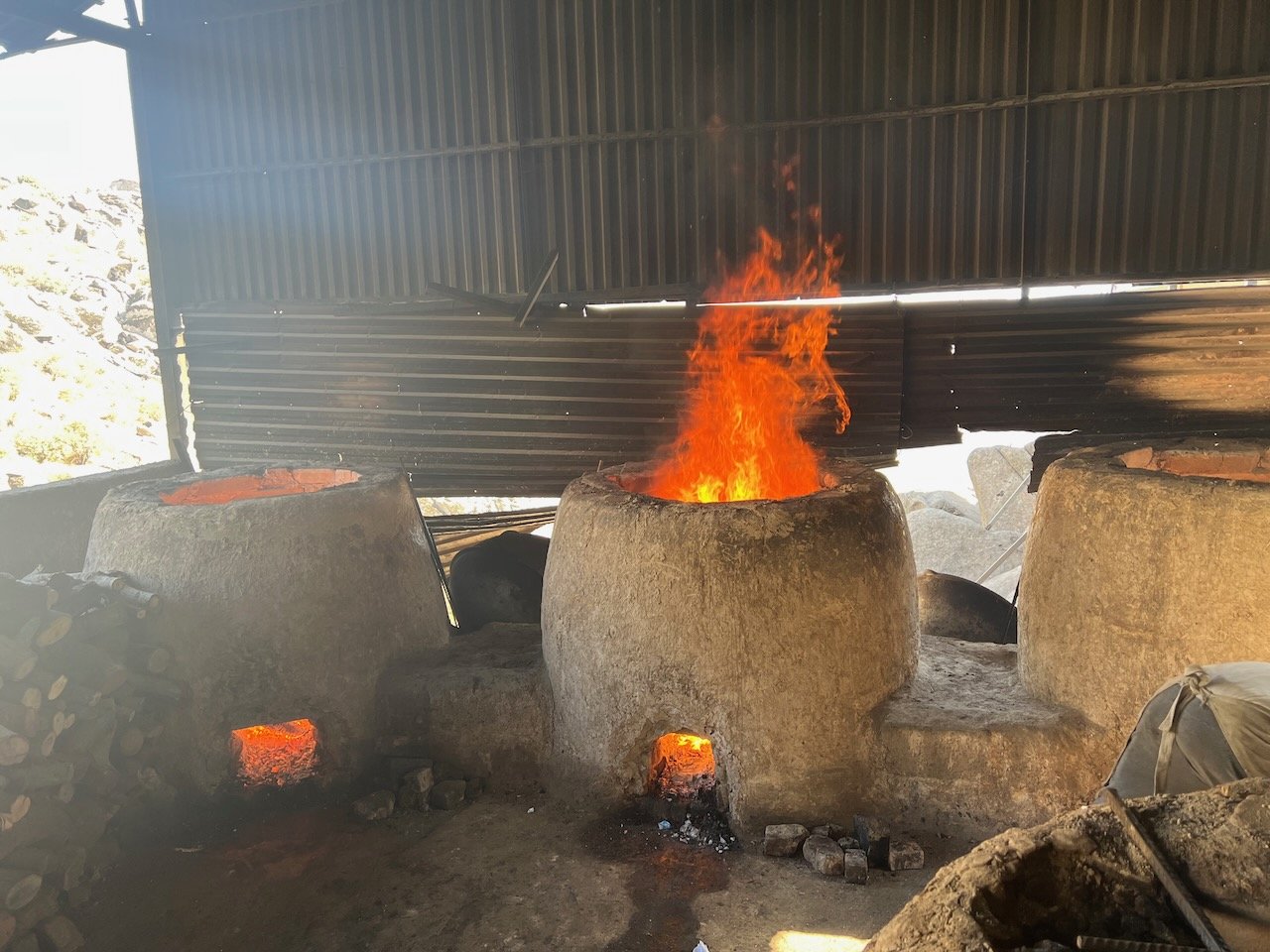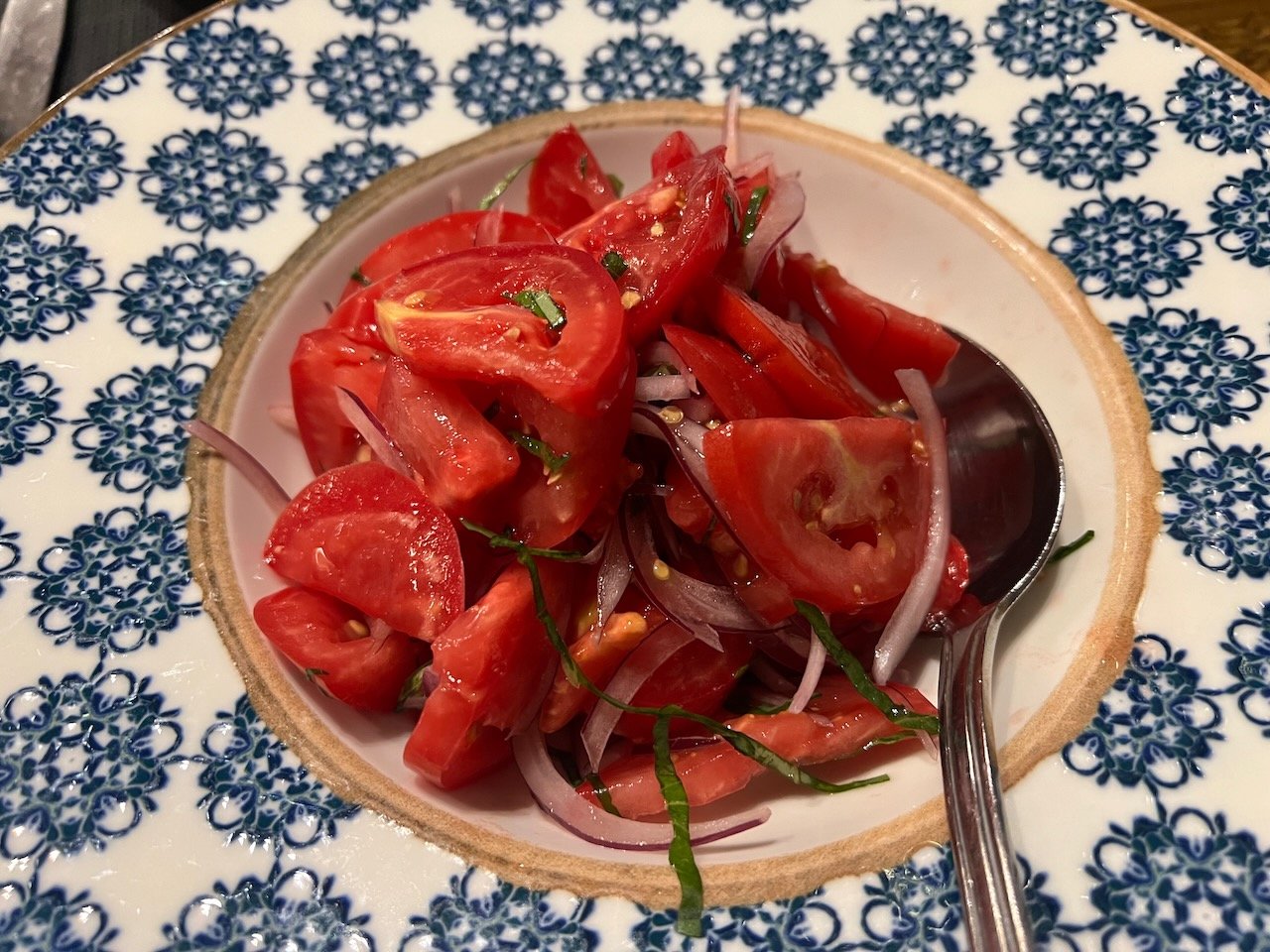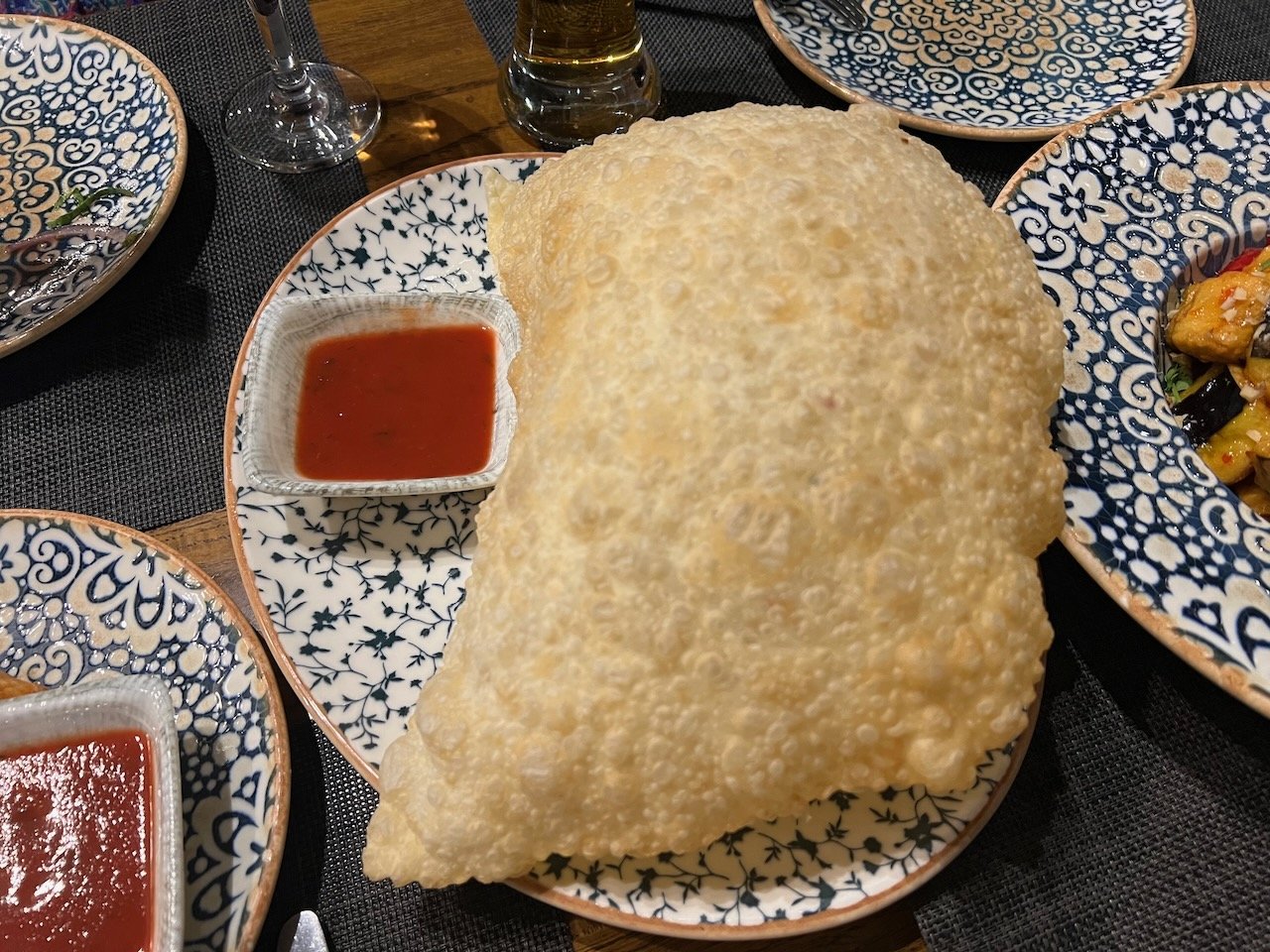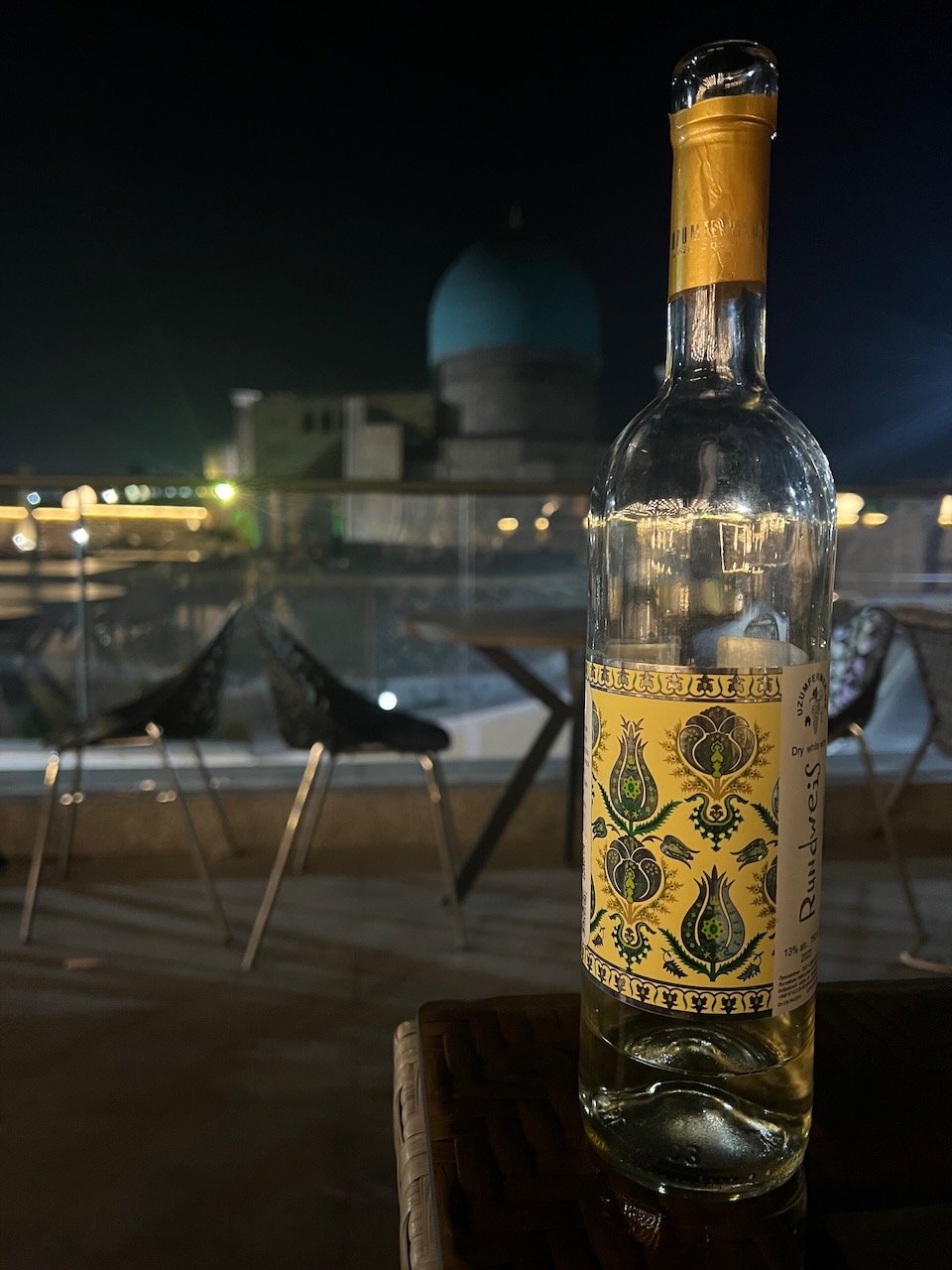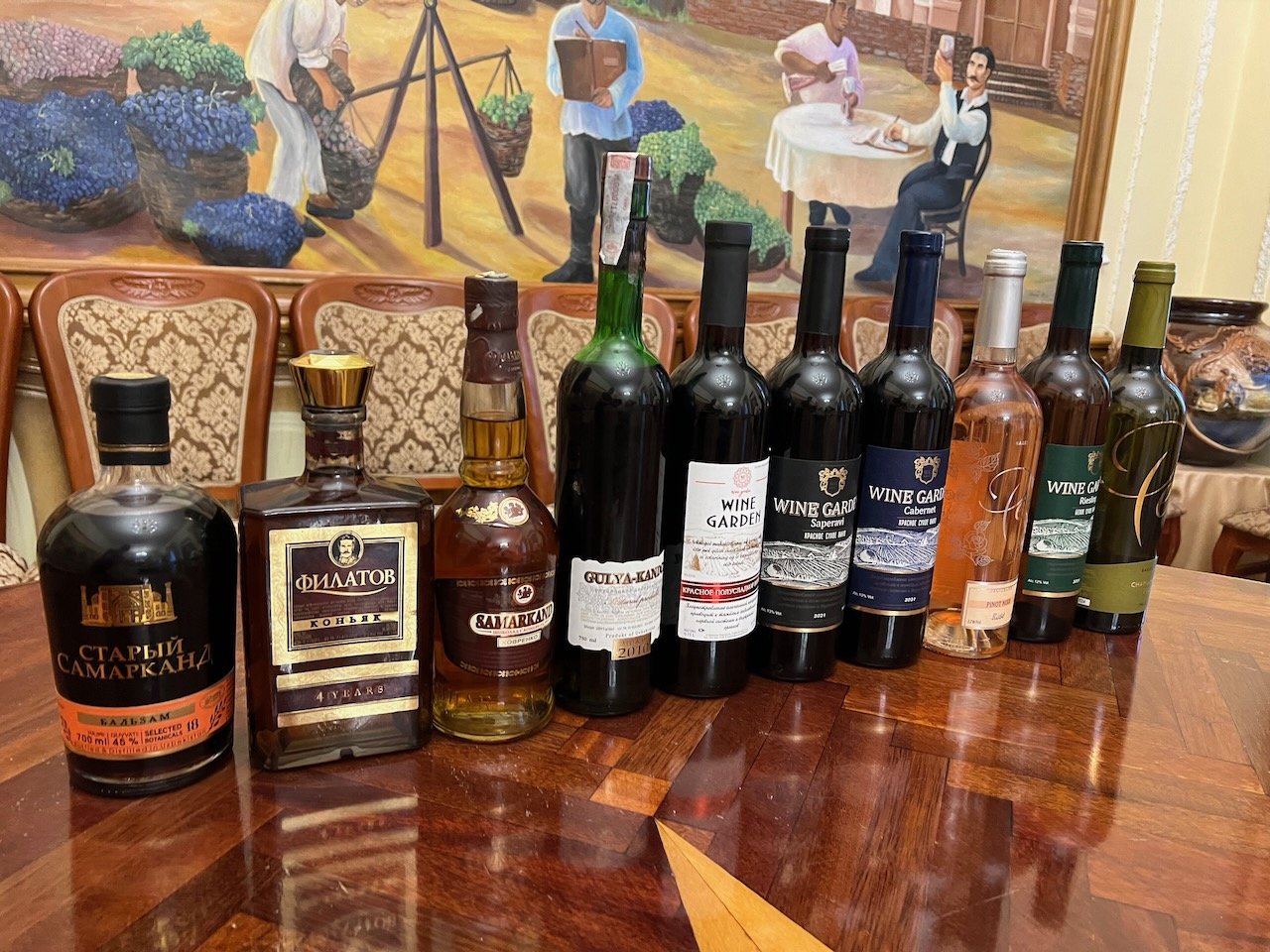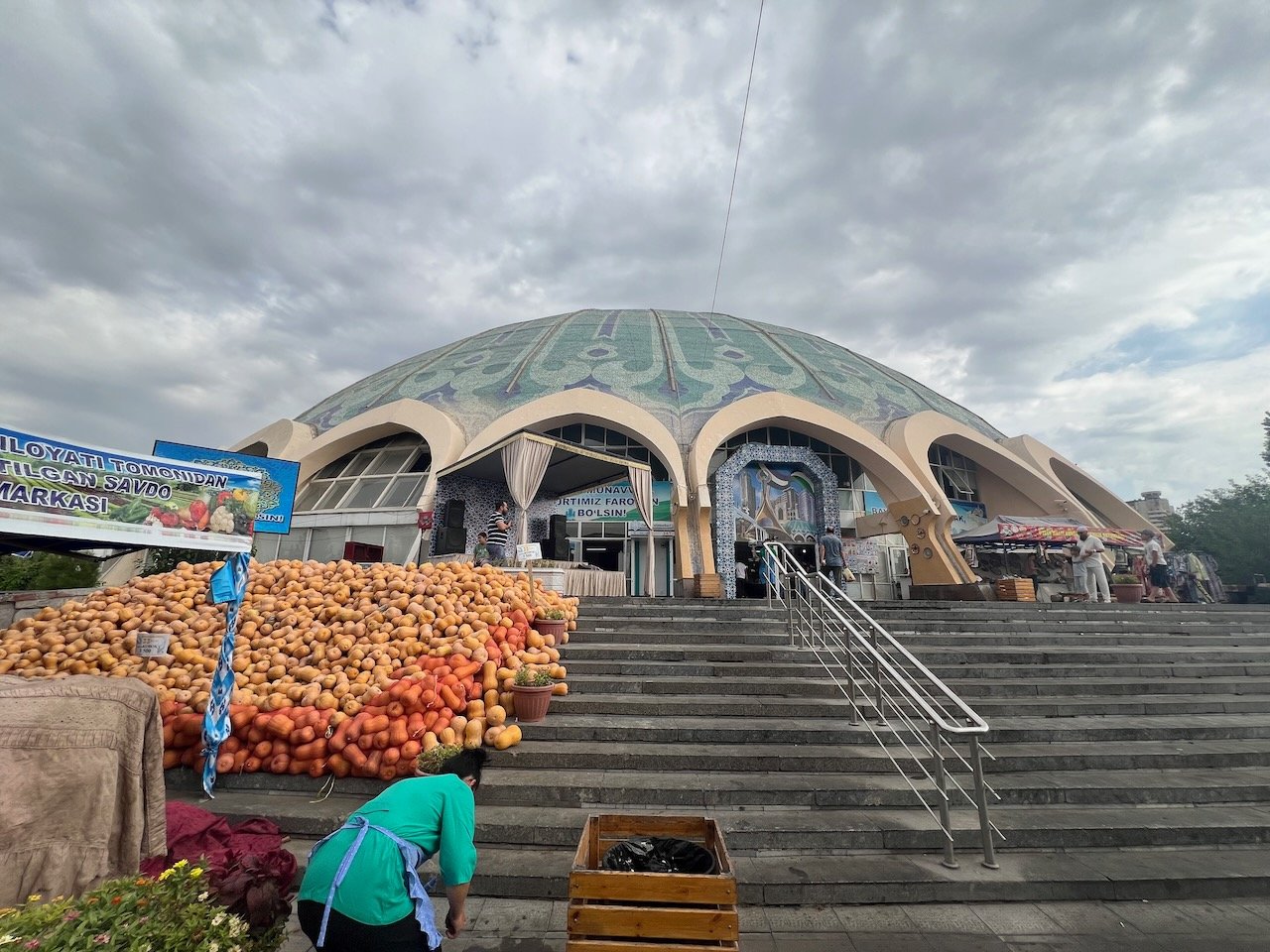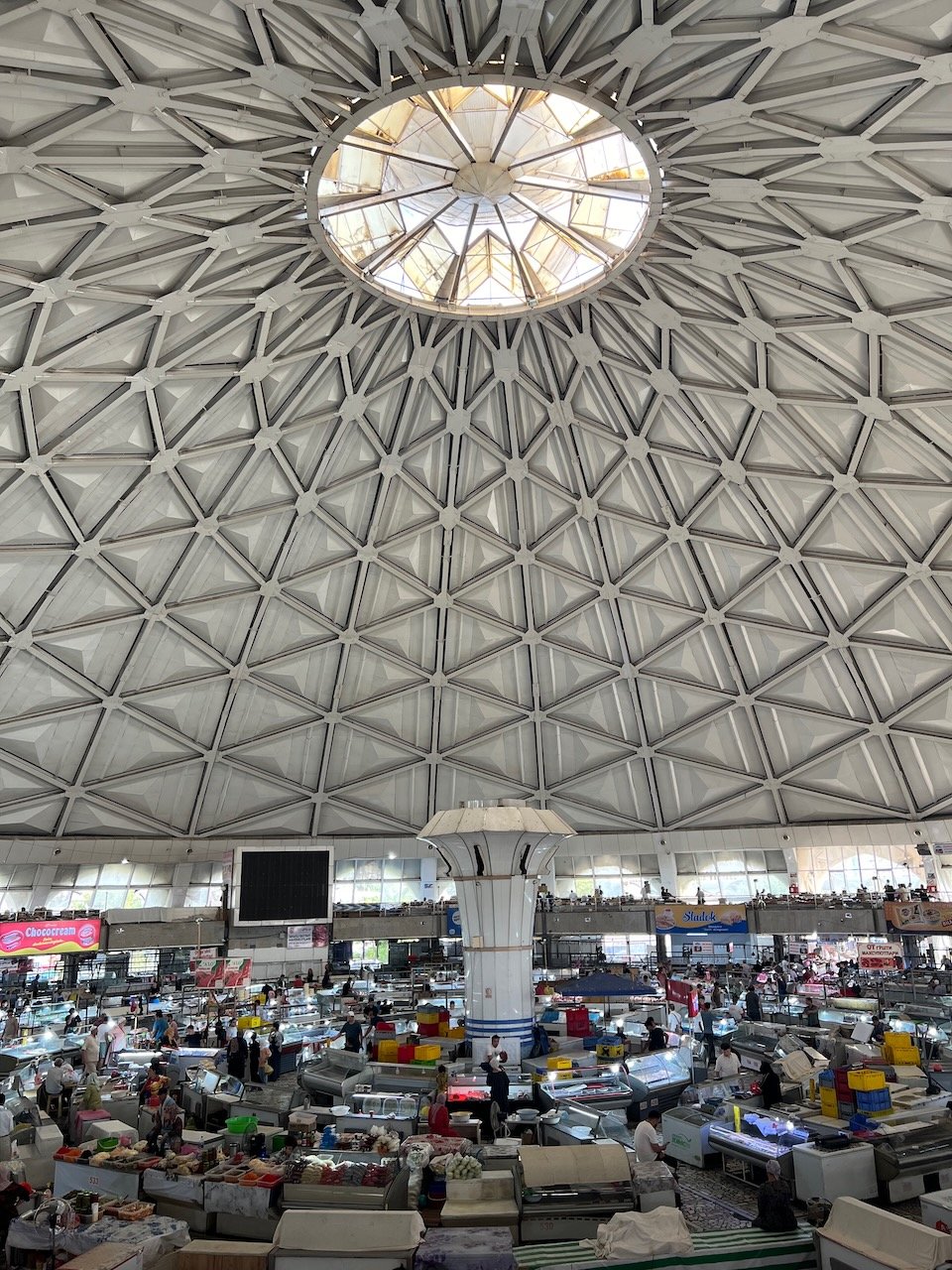Central Asia - Food (part 1)
At long last, I’m sharing some pictures and stories from Central Asia. I’ll do this in three posts - the first features food and the subsequent posts will focus on the sites and culture of Kyrgyzstan and Uzbekistan. Unlike my typical narrative-filled commentary, I’ll try to communicate via more images, with captions describing or telling a story about why I wanted to share. (Please remember that if you are reading this on a mobile device, turning the phone to landscape mode will show the captions and picture descriptions.)
This first post will focus on food from Kyrgyzstan and Uzbekistan. I’ll break it down by three general categories:
Kyrgyzstan - Home Meals
Kyrgyzstan - Favorite Foods & Restaurants
Uzbekistan Eating
Even after being back for several months, here are some of the meals and dishes that I miss and are particularly memorable:
Lagman, particularly a) chive lagman and b) boso (fried) lagman
Ashlyan-fu from Karakol
Plov from Besh Qozon (Tashkent)
Tandoor lamb from Katta Tosh (Uzbekistan)
Achichuk salad from Afsona (Tashkent)
Home cooked meals
Fresh lamb and natural fruits
The good news is that we have been able to et some of these items in the US, made by friends (and one of Charles’s babysitters) who are Kyrgyz. They make very good versions, but the ones in Kyrgyzstan were better.
Overall, the food in Central Asia is characterized by natural freshness. By that, I mean the meats often start as whole animals butchered on-site, so the what we are eating was alive just hours earlier. The fruits are similarly picked fresh nearby and sold in the market or on the street corner. In addition, everything is all-natural and organic - the animals feed on the grass and run freely; the fruits and vegetables have their true concentrated flavor. There isn’t an industrialized food production industry as in the US.
In general, traditional Kyrgyz cuisine is based on meat - lamb, beef, horse - and cooked with techniques befitting a nomadic culture. There typically aren’t a lot of spices beyond salt and pepper. A few key dishes can be found on nearly every restaurant menu:
Boorsok: fried bread to start a meal
Pelmeni: little dumplings, which can be boiled or fried
Manti: steamed larger dumplings filled with meat and onions
Samsa: baked dumplings in a flaky pastry. Often sold on the street
Beshbarmark: a national dish made of pasta topped with finely chopped meat. The translation of the name of this dish is “five fingers”, as the meal is traditionally eaten by hand
Kuurdak: meat and potatoes
Lagman: noodles with meat and vegetables. This can be served as a soup, semi-liquid (gyuro), or stir fried (boso). The sauce usually includes soy sauce and other seasonings
Plov: rice dish with meat and vegetables, also known as pilaf
Shorpo: soup broth with meat and potatoes
Shashlik: skewered grilled meats
Restaurants will also serve a variety of salads and more speciality foods. In addition to the traditional nomadic foods, Kyrgyz food also includes dishes influenced by Dungan and Uyghur cultures. One especially tasty dish is ashlyan-fu, a cold noodle dish thought to cure hangovers and other illnesses.
Kyrgyz cultures values hospitality and it is reflected in the meals. Tea is always poured, both as a welcome tradition and as part of the meal. Kyrgyz tea tends to be brewed very strong and then diluted with hot water. My cup was hardly ever empty - as soon as I finished, it was refilled. A bounty of boorsok is plentiful is always offered to start a meal. The boorsok is usually served with kaymak, a clotted cream that is between a butter and a sour cream in terms of consistency and taste. Another food item worth mentioning is navat, a crystallized sugar that is both a sweetener for tea and a dessert on its own.
In terms of prices, food in general is quite reasonable. For local restaurants, dishes like manti and samsa are $1-2 each, lagman are $3-4 per plate, soups are $3 per bowl, beshbarmark and kuurdak is $4-6 for large plates (enough for sharing), shashlik is $3-8 per skewer (depending on the meat). Some larger platters or big plov will be costlier. In general, it’s hard to spend more than $20-25 per person at a nice restaurant meal. There are some “fancy” restaurants, e.g. Frunze, Barashek, that have the trappings of fine dining, i.e. higher end decor, more refined plating, better service, etc. These can be a bit more expensive, but we preferred the more local establishments that offered superior value. Those restaurants are likely geared more for ex-pats and tourists vs. locals.
Finally, before getting to the food pictures, here are a few words that are important in the context of eating and food
“daamduu” (даамдуу): this is the Kyrgyz word for delicious. When eating an especially tasty version of lagman, feel free to exclaim “daamduu!”
“kushiat” (кушать): this is a Russian word for “eat.” For us, it was used like a command to start or continue to eat. Charles was able to teach this world to some friends
Kyrgyzstan - Home Meals
Most meals are consumed at home and often as part of a larger gathering. Preparing meals is a family / community event where everyone has a job. In general, the men and boys will butcher the animal and then prepare the various parts (nothing is wasted). The women and girls will prepare the doughs and vegetables. The doughs, which make the breads, noodles and dumpling wrappers, are so good and they make it look so easy. Both will then cook and assemble the dishes.
One main way to honor guests is to sacrifice a sheep, goat or horse. Aiday’s family would go to the auction, select a sheep, bring it home and then keep it tied up until it is time to start preparing the meal. The animal is honored with a prayer and given thanks, and all parts are used. The honored guests (us, in many cases) get the best cuts of meat. Whatever is not used that day is saved for later that week or distributed to family and/or community.
The first night of arrival featured a kuurdak, Kyrgyz’s national meat and potato dish. The fat from the meat coats the potatoes and imparts a great flavor. Kyrgyzstan does not use a lot of spices beyond salt and pepper in its cuisine. While part of the Silk Road, it was not a trading center, so it doesn’t have “exotic” influences.
Feasts are typical for a family gathering. For these meals, a long table is set with a large variety of salads, fruits, boorsok (fried dough) and other finger foods. After that, the main course(s) will be served. These could include meats, kuurdak, beshbarmark, and more. Of course, a variety of desserts (which often includes a cake from Kulikov) close out the meal. Aiday’s family was quite amused as I had a keen eye for the distinctive purple Kulikov signs, as though my radar was finely tuned to seek them out.
Other home cooked meals feature lagman (noodles with beef), and manti (dumplings), and shashlik (grilled meats). As fitting with its nomadic history, these dishes can be prepared outside using an open fire and a kazan - essentially a large wok - or grill. We had these dishes in places ranging from our rented apartment in Bishkek (cooked on a stovetop), vacation rental in Issyk-Kul (cooked in an outdoor kitchen), Ala-Archa park (cooked over an outdoor fire).
Shashlik is usually served with sliced raw onions soaked in vinegar. This is a simple addition that adds so much dimension to the meat. I plan to eat and serve with grilled meats with this addition more often back in Chicago.
Similar to the freshness of the meats, fruits and vegetables are natural, organic and very tasty. Fruits and vegetables, as well as honey from the mountains, are grown by families and/or wildly. As such, they taste vibrant and flavorful, without the large size that may be visually appealing but diluted in flavor. In central Bishkek, you can’t walk for more than a few blocks without encountering someone selling fresh berries. In the main bazaars, we were able to buy liters of jams made with the fresh fruit. This added to the jams that we made from fruits from Aiday’s families’ gardens. For the cost of a pint of fruit at a farmer’s market ($6-7 in Chicago), we could get ~1 kg of fresh fruit that tasted even better.
It was also fun for Charles to literally shake the tree to get fresh fruit from the side of the road. Apparently, this is common practice in Kyrgyzstan, as we were not the only ones who were doing it.
Kyrgyzstan - Favorite Dishes & Restaurants
Our favorites restaurant meals in Kyrgyzstan featured both traditional native foods and some ethnic cuisines. For traditional local foods, we liked to eat at Navat, Faiza and Supara. For non-Kyrgyz foods, a place called Pa-Puri, serving Georgian food, was our favorite - we went 5x! Another place that we enjoyed was Usta, a Turkish steakhouse. This is a decidedly more upscale restaurant with prices that are high for Bishkek but still a bargain relative to the quality of a comparable US restaurant.
Somewhat surprisingly, there are a lot of western and Asian foods available. There are a number of pizza chains and some larger restaurants menus offered it as well. Sushi and “ramen” were also widely available. But being available didn’t mean that we ordered it more than once after sampling. When we tried the ramen, it was basically instant noodles with a thinly flavored broth, rather than a rich broth that had been simmering for hours. The pizza had the look and basic ingredients of a pizza, but the crust was flavorless. We went to a Japanese restaurant one night and was excited by the decor and menu, but ended up disappointed by the sushi. We are hoping that her family will get to try more authentic and flavorful versions.
One of the most popular restaurant chains in the country is KFC. At food courts, the line is always longest at the KFC, with a large percentage of orders going out for delivery as well. Its appeal is undeniable. The flavor is good and the smell of fried chicken is intoxicating. The quality is similar to fried chicken in the US and other parts of the world.
With respect to favorite restaurants, we returned repeatedly to Faiza, a local staple. It serves excellent versions of local foods at reasonable prices. The restaurant is usually busy, requiring a short wait. Navat is another reliable place, with several locations throughout Bishkek. In addition to the quality food, two other things stand out. First, their menu is very helpful, as they have English versions with pictures (see the link). Also, the location near our apartment has a kid’s play room, with an attendant. This is a brilliant idea that I wish would be implemented in the US. Families can go to lunch / dinner and let the kids run around and play in the room without trying to keep them in their seat. We met some friends at this Navat and had a leisurely meal and tea while Charles and their kids alternately ate and played. Having an attendant in the playroom also meant that we didn’t need to keep a constant eye on them.
Supara is both a restaurant complex and a yurt resort. I’ll write more about our experiences there in a separate post, as we stayed at the yurt resort for a few days.
Here are some photos of favorite local foods from these restaurants.
Ashlyan-fu was a dish that I fell in love with on this trip. Our itinerary included a few days in Karakol, on the eastern edge of Lake Issyk-Kul and less than 100 miles from the Kyrgyzstan-China border. This is the iconic dish that is synonymous with the city and its Dungan influence. Dungan’s are a Chinese-Muslim minority.
The dish is a cold noodle soup. There are two types of noodles - long wheat noodles and a wider starch noodle. To this, a spicy and vinegar soup are poured over. The dish is topped with sliced / crumbled eggs and scallions. Extra spicy sauce is optional, but its addition is always approved by the vendors. The other beauty of this dish is that it can be prepared and served literally in seconds, as the bowls with the noodles are already portioned out. Also, the cost of a bowl of ashlyan-fu is around 50 som, or less than $0.60 each.
The first day I tried ashlyan-fu in Karakol, I went to 4 different places and had a bowl at each. I would go back to any of them and slurp down a few bowls. Even if I don’t need to cure a hangover (rare these days), the bowls are tasty on their own and if they improve health, so much the better! Some restaurants in Bishkek and outside of Karakol serve ashlyan-fu but the ones in Karakol are much better.
Uzbekistan
We quite enjoyed our dining adventures in Uzbekistan. Charles, Aiday and I traveled there, so only 3 mouths to sample the food but we were able to take in quite a lot. In fact, several of our most memorable meals from the trip were eaten in Uzbekistan.
The cuisine in Uzbekistan has a great deal of overlap with Kyrgyz and other Central Asian cultures. There are a few notable differences, such as i) plov, ii) nan (or non) bread, and iii) wineries. In addition, it seemed that because cities like Samarkand and Bukhara were important capitals and trading centers along the Silk Road, there was a greater variety of spices and influences reflected in the food.
Uzbekistan is probably known most for its plov, and each region has its own variations and specialties. As plov is quite a hearty dish, this is typically served only at lunch. In a way, it’s analogous to BBQ joint - vast quantities of food is prepared starting early in the morning and the restaurants close when they sell out.
One of our first stops in Tashkent was to visit Besh Qozon, near the TV tower. This is one of the main centers of plov, where many varieties are available. I heard that they sell 1.5 tons of plov per day, all within a 3-4 hour lunch window. I was somewhat surprised that anyone could walk into the kitchens and get up close and personal to all the different plovs. It was also interesting to witness the different sizes of kazans - some were more than 6 ft in diameter - and the different styles of plov. For example, the ingredients in Bukhara plov are cooked separately and then combined at the end. Samarkand (also known as osh) plov is cooked together but not mixed. Wedding plov cooks all of its ingredients together. In terms of the ingredients, all plovs have rice, carrots, onions and meat. Some versions add raisins or chickpeas and/or chop the vegetables differently. To serve a plov, the chef will scoop the rice mixture from the kazan onto a plate. It is then topped with chopped meat and then optionally a quail egg, dolma, and/or kazy, a horse sausage.
One thing to note: the kazans are enormous. I don’t know the capacity of each one. However, if you watch some of the linked videos and see how much oil is used to cook the plov, remember that there is a lot of rice, vegetables and meat to be added. There is enough oil, though, to make sure that each rice is cooked individually and does not stick together in clumps.
We went at lunch time and our mouths were watering walking through the kazans and smelling all the plovs. We ended up ordering half portions of 4 different types of plov, as well as the nan bread and tea. The entire meal cost us $21 and we had enough to feed us for at least two additional meals.
Bread is a passion in Uzbekistan, and there are many different types. As someone who dabbles in making sourdough bread, I like to watch how others make bread. At Besh Qozon, it was mesmerizing. Each piece is prepared and then individually stuck onto the wall of the oven. It was some of the best tasting breads on the trip. Another bread that is prized are the loaves sold around the Ulugh Beg Observatory in Samarkand. These loaves are much heavier - up to 2kg and can last for a while. We bought a few with the intention of bringing them back to the US. Unfortunately, we didn’t take care of them properly and were only able to sample one that we shared in Kyrgyzstan. Another regret is that I didn’t buy a bread stamp as a souvenir - some of the patterns were really beautiful.
Katta Tosh is still one of our most memorable meals from the entire trip. This was a place that wasn’t part of my planning list or a place we sought out. We ate there on a tour between Samarkand and Shahrisabz. It is located just off the road in the mountain between the two cities, and it is a destination - we saw lots of cars picking up boxes of meat as to-go orders. Our driver seemed to be a regular at this place, so we were able to get a table overlooking the valley.
The restaurant serves just one dish - tandoor roasted lamb and the accompanying sides. The meat was spectacular! What makes it so special? Freshness, meat quality, and experience are the primary reasons. The mountain lambs are butchered on site, then marinated with some spices including juniper. The animals are naturally raised - free to roam around the mountains and eat grass. The meat is then cooked in giant tandoor ovens (covered and sealed) for several hours. The only questions when ordering is how much meat (by weight) and the cut. We got a nice mix of ribs and just the right amount of fat (without having to pay for the bones). The side dishes are bread, a tomato salad and some yogurt. But the meat by itself is all you need - so tender and flavorful.
The restaurant meals in Uzbekistan were also quite good. We had surprisingly good Western-style food the night we arrived in Tashkent (we ate the hotel, as we arrived late and left early the next morning). For our last meal before returning to Kyrgyzstan, we went to a higher-end place called Afsona, where there were more tourists eating than at other places we visited. They served two excellent versions of the achicuk (tomato, onion, basil) salad and cheburek (fried dough). Another dish that we enjoyed quite a bit that was on a lot of restaurant menus was fried eggplant with sweet chili sauce. This seemed to be quite a Chinese dish that I wasn’t expecting in Uzbekistan.
We were somewhat surprised to learn that Uzbekistan has wineries. Our first dinner in Samarkand was at a restaurant rooftop that overlooked the Registan. It had a wine list that featured local wines and we like the bottle we tried. A tour guide told us about Khovrenko, a wine museum and maker, so we tried more wine at that tasting. The wines tended to be more on the sweeter side and better than expected - quite drinkable and a good value.
We did make a stop at the Chorsu Bazaar in Tashkent. Its striking dome is well known but as a market, it doesn’t seem to be as prominent as it once was. We didn’t eat there, but we did buy some dried fruits and teas from the vendors, all of whom were happy to provide samples before purchasing.
Tashkent tea is something that we order regularly when dining out. There are many versions of this, but a citrus (lemon or orange) with mint and a sweetener provide a refreshing taste. We brought back some tea with these fruit and floral notes as a nice reminder of our time in the country.
That covers the highlights of food in both Kyrgyzstan and Uzbekistan. I’m hoping to send photos of the sites and places we visited in both countries in the next few weeks, so be on the look out for those. In the meantime, I’ve included some links to videos that show how some of the food is prepared and eaten. These could be a starting point for your own deep dive if you are curious.
Thanks again for reading and coming along on this food journey.
Useful links
Menus (in English): these will provide additional background of the dishes as well as show pictures
Youtube Videos: these will show how some of the food is prepared and eaten. These creators have a many more videos about food in Kyrgyzstan and Uzbekistan if you want to dive further
Mark Wiens - Street Food in Uzbekistan: includes a visit to Besh Qozon. He has a 6 video playlist of Uzbek food
Abroad and Hungry - Rare Seen Mountain BBQ in Uzbekistan: includes a segment on Katta Tosh
Bohemian Kitchen - Kyrgyzstan Nomad Village Food: shows how samsa, kaymak and manti are made. He has a 7 video playlist of Kyrgyz food
